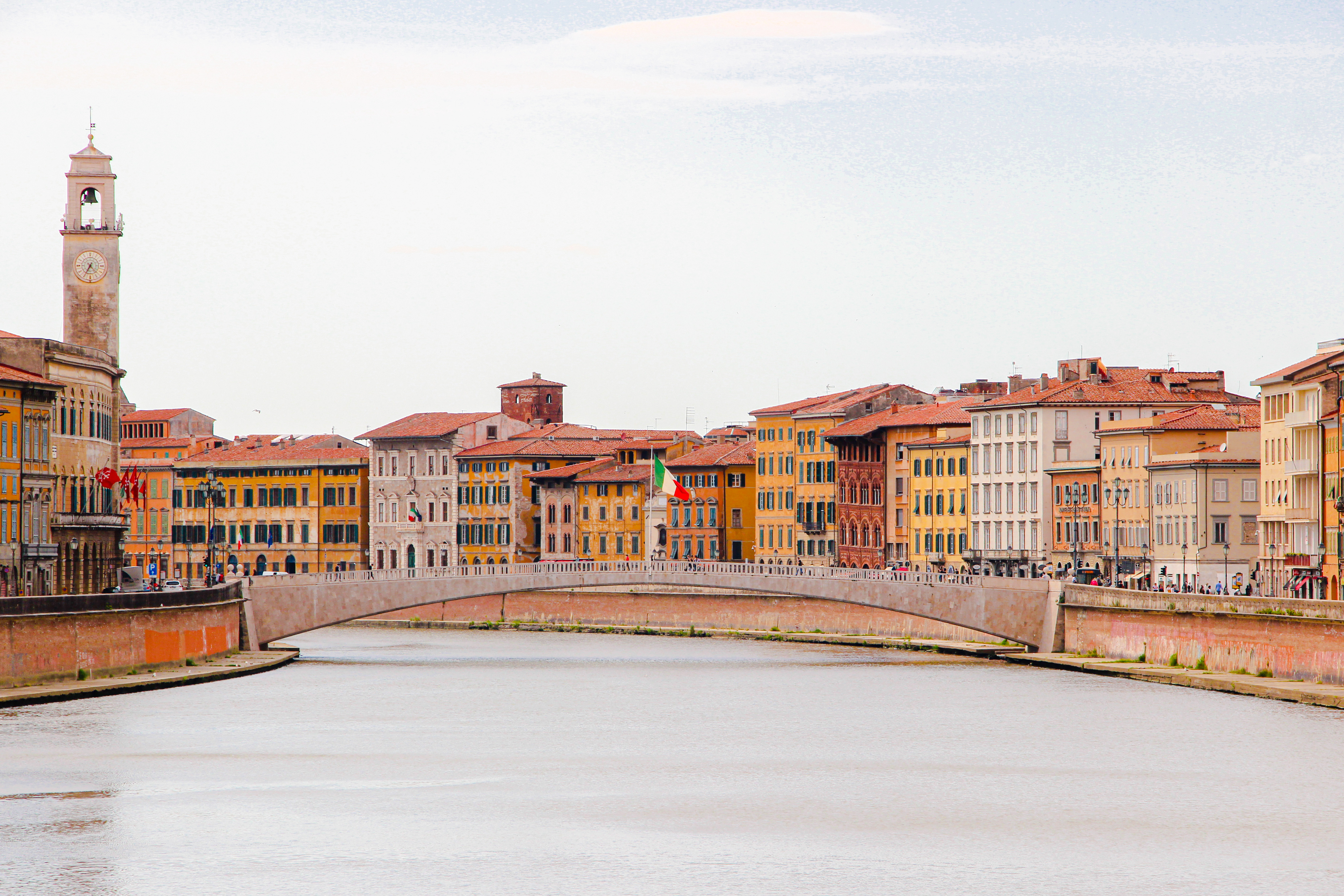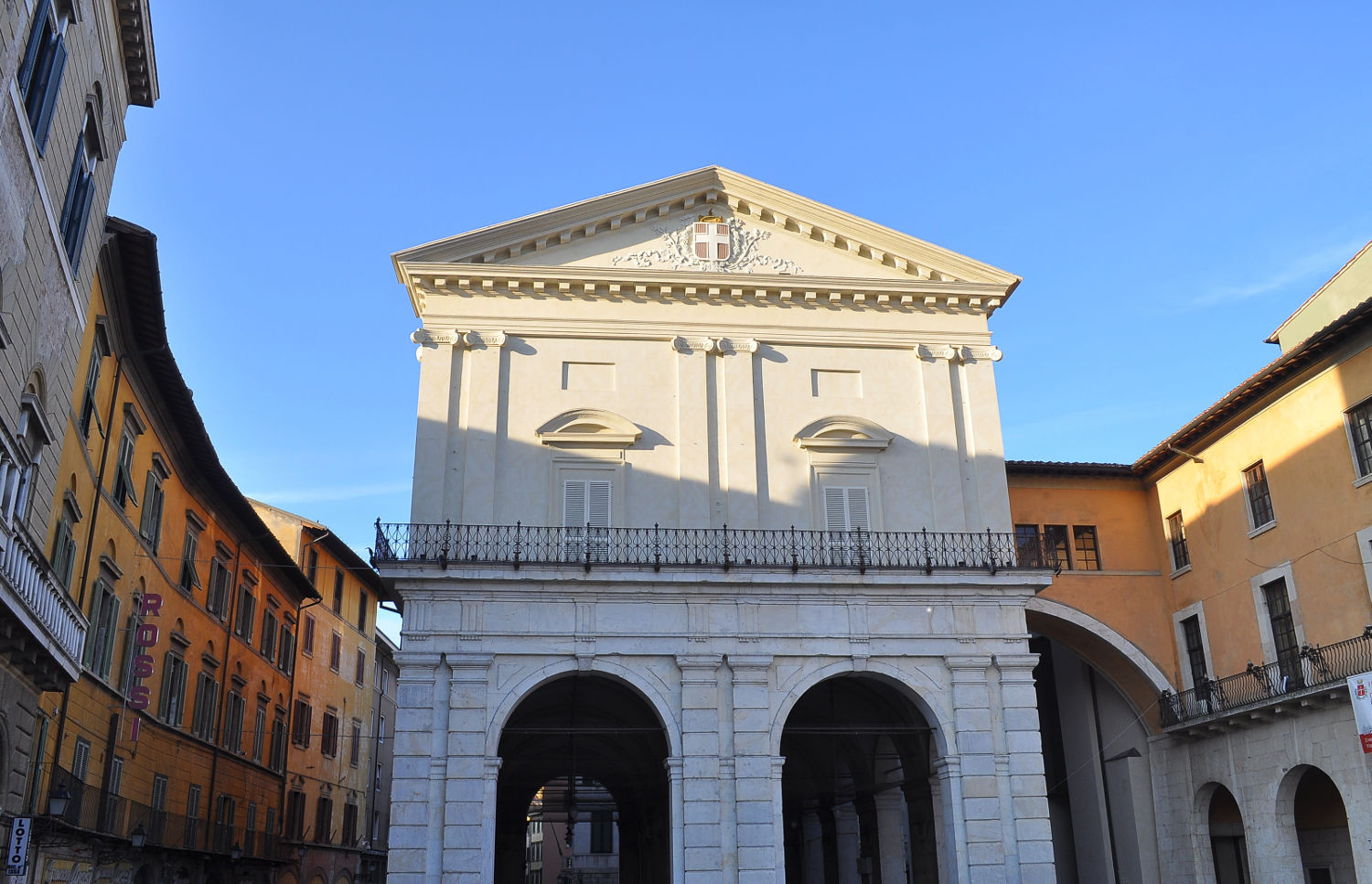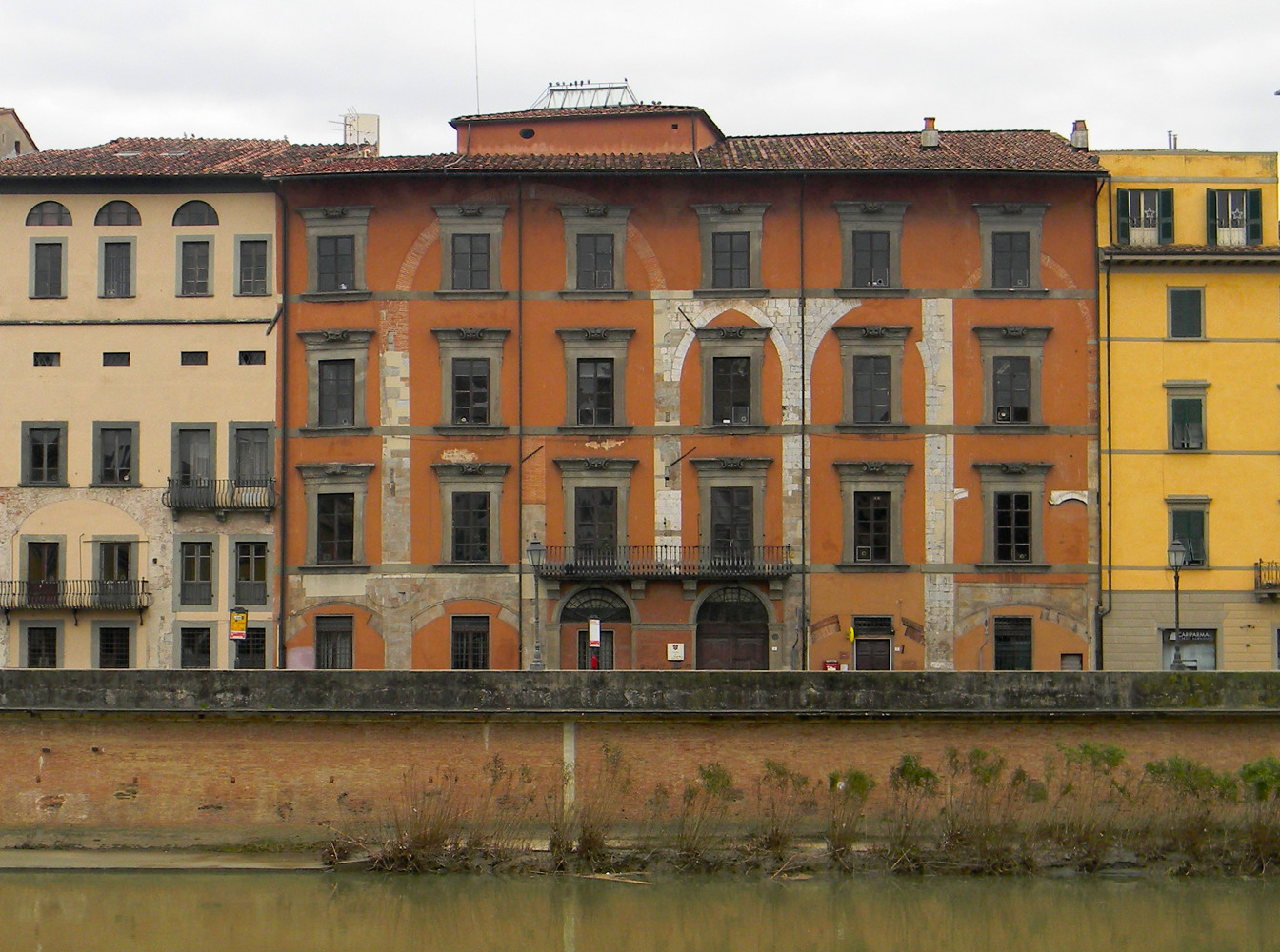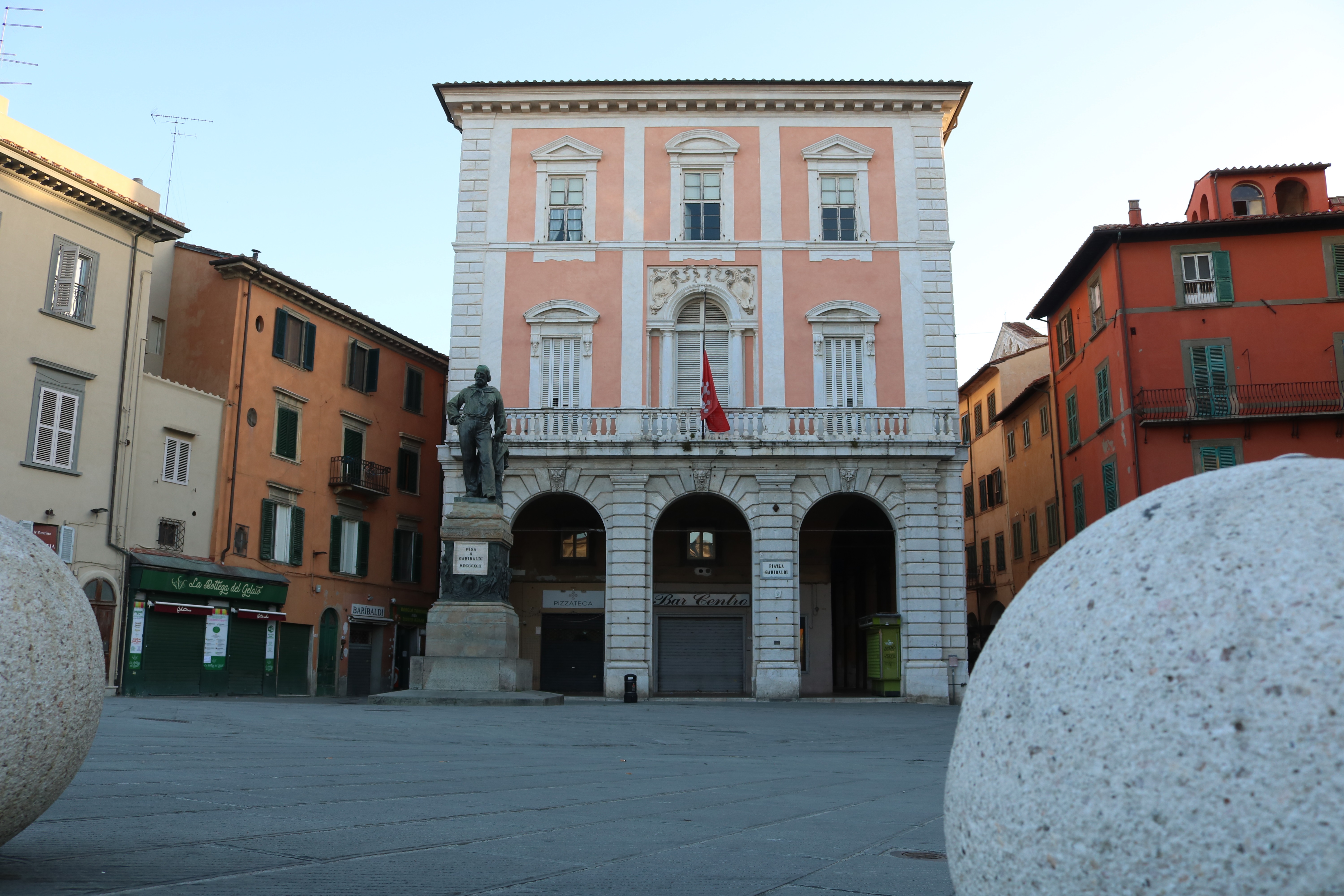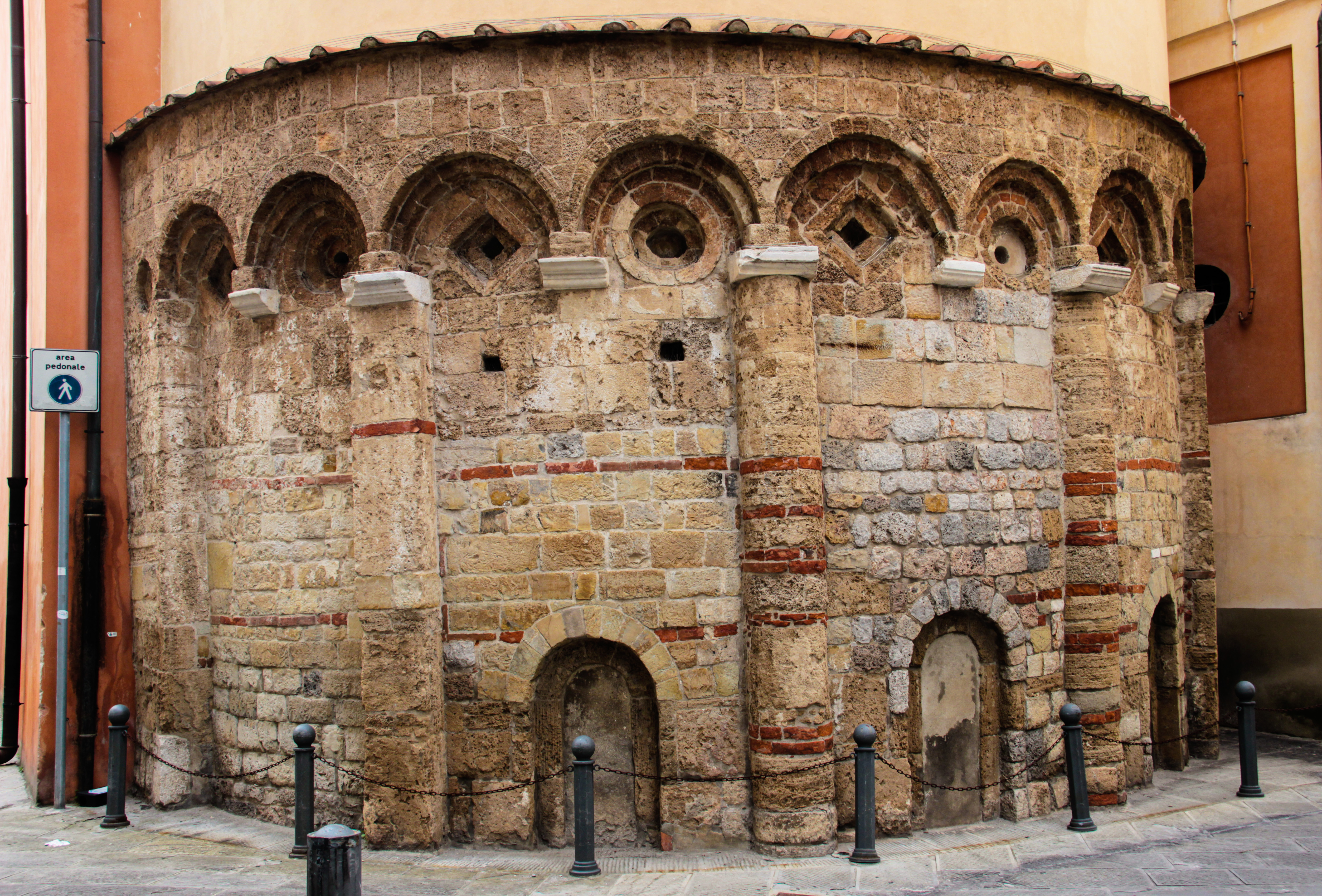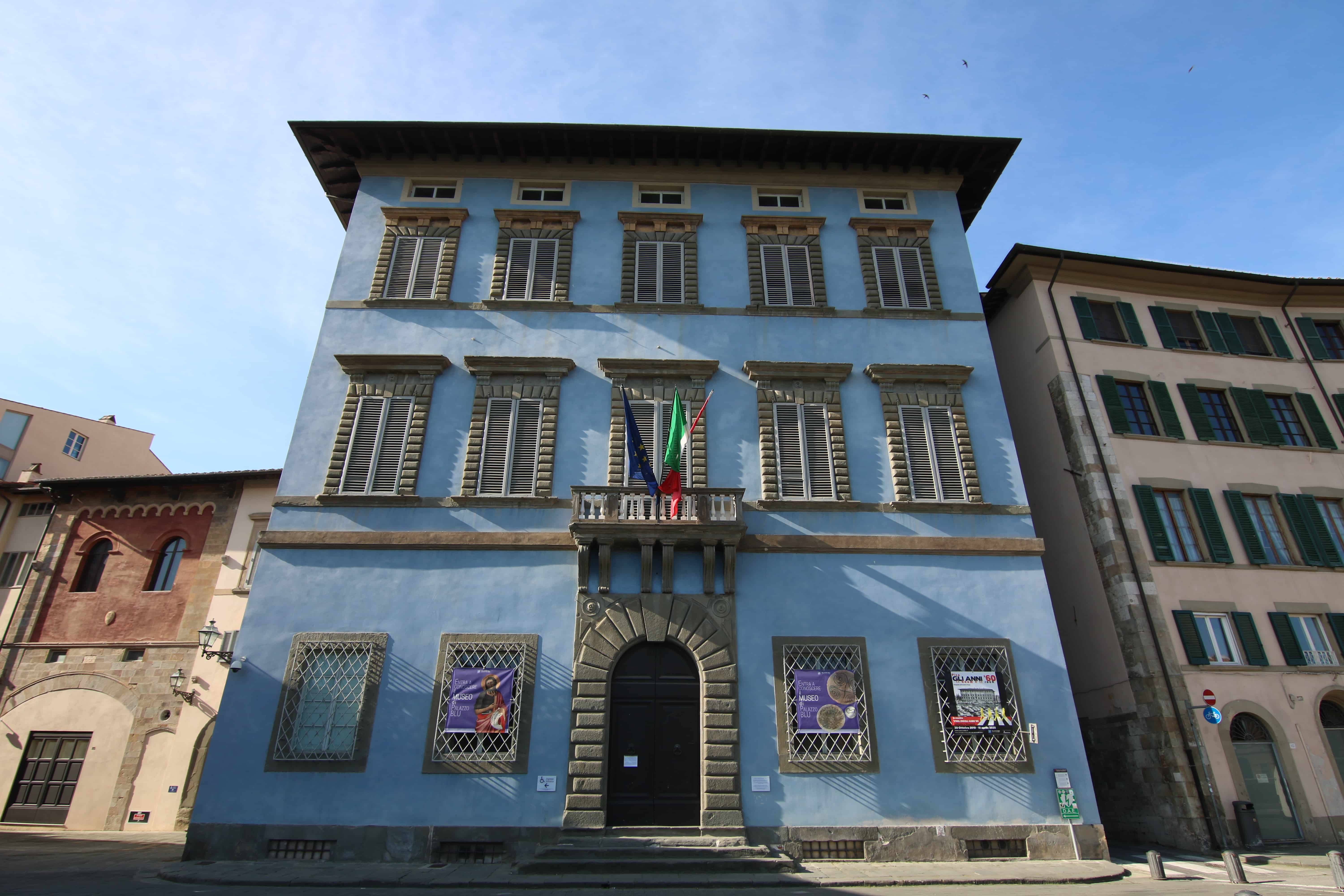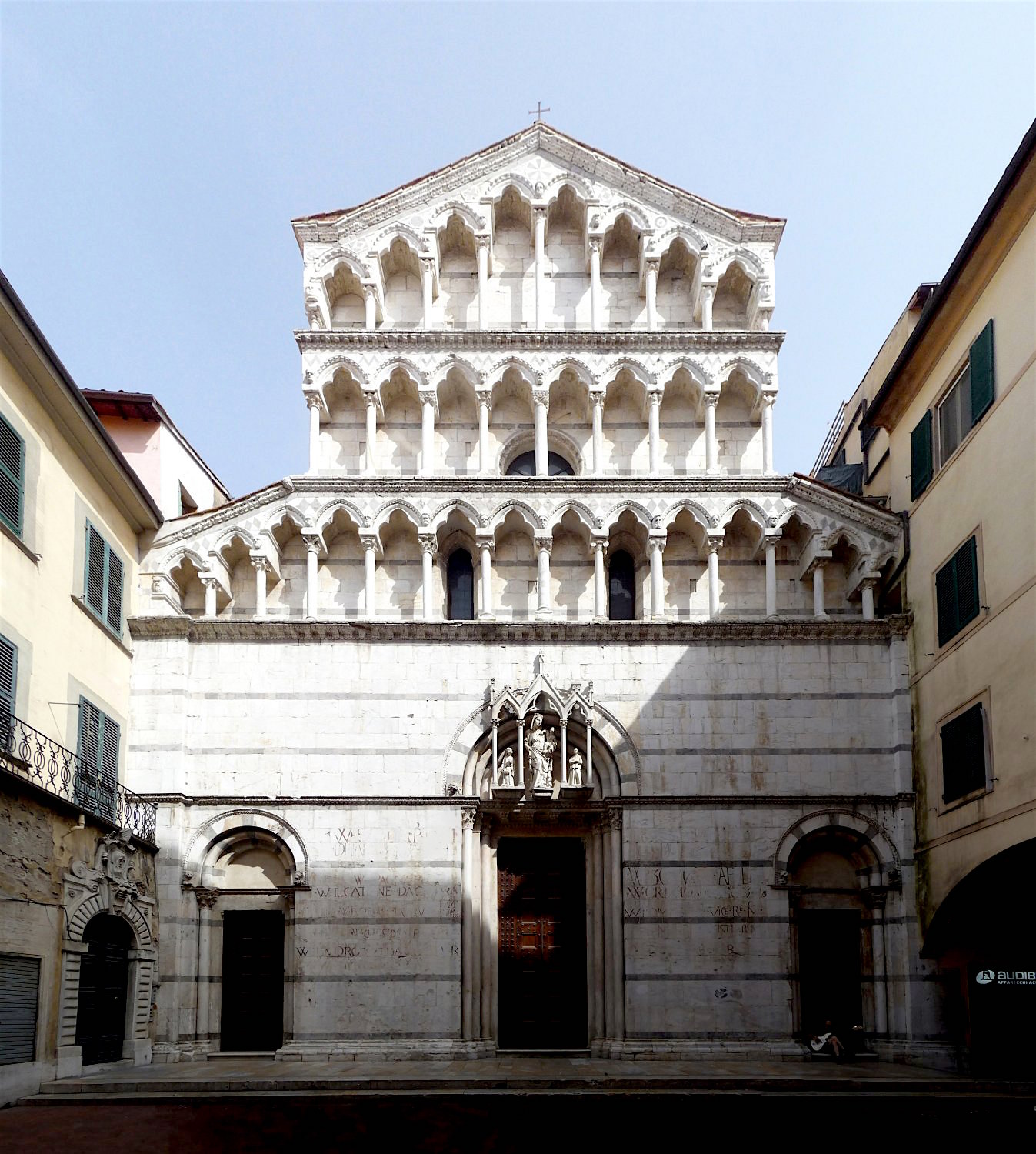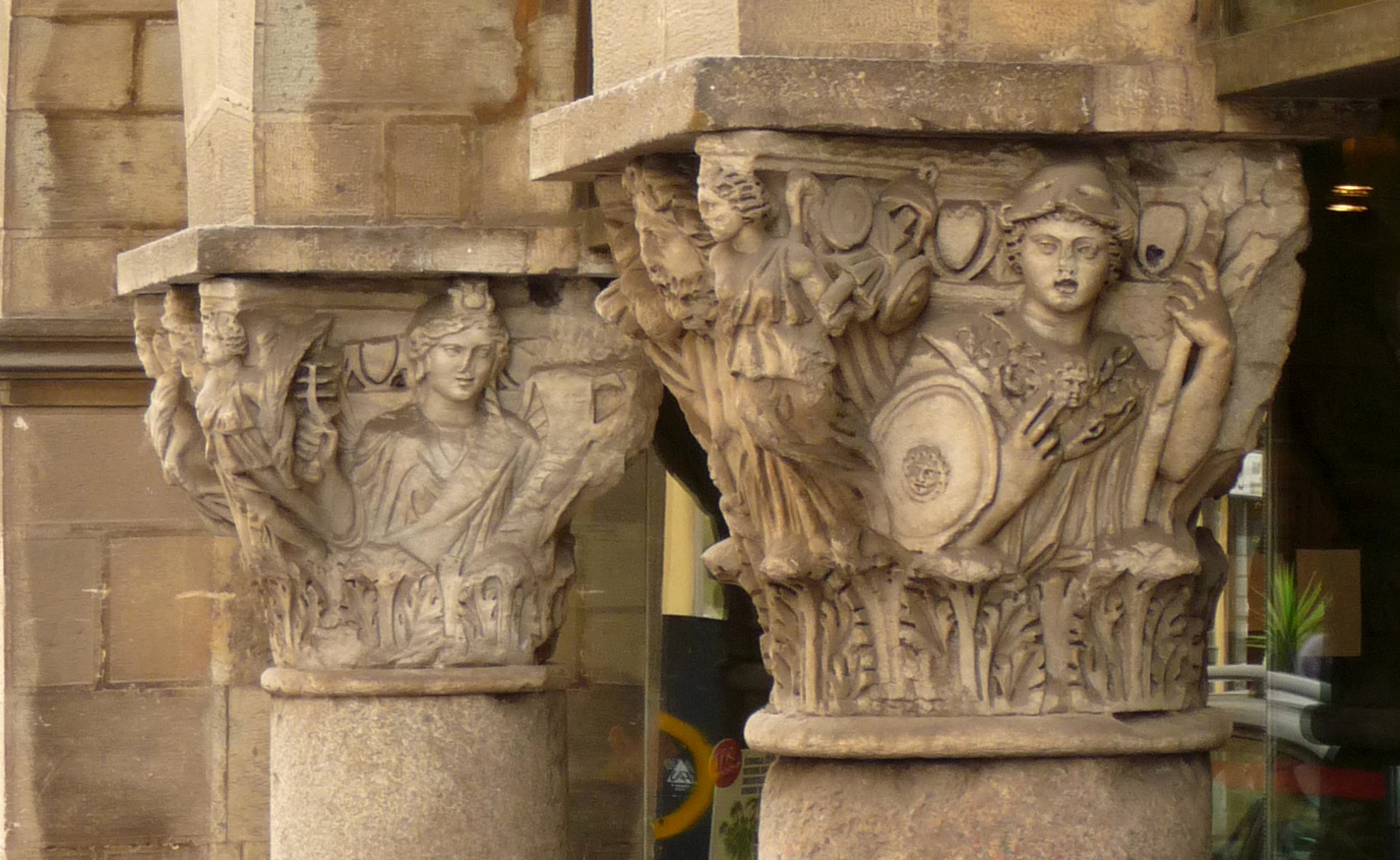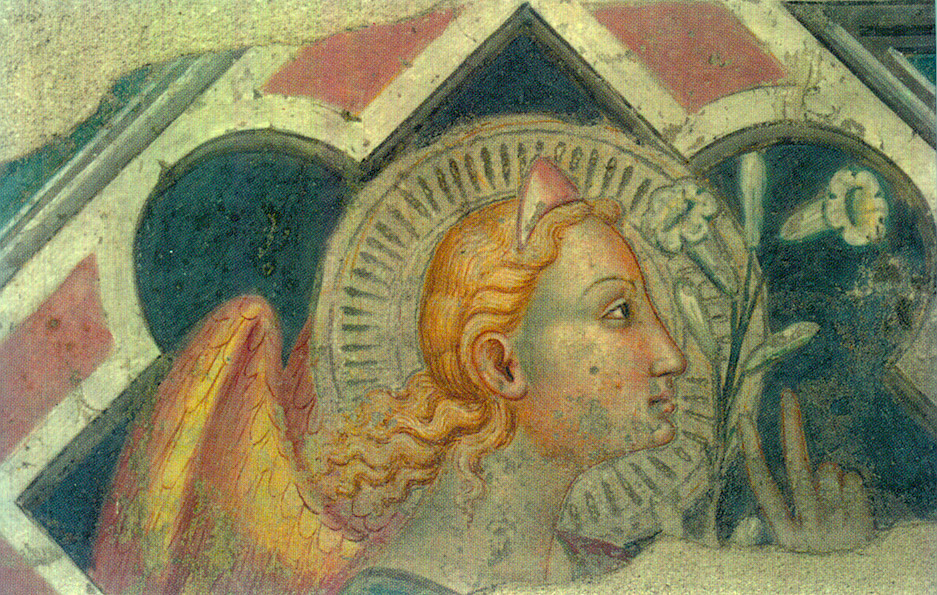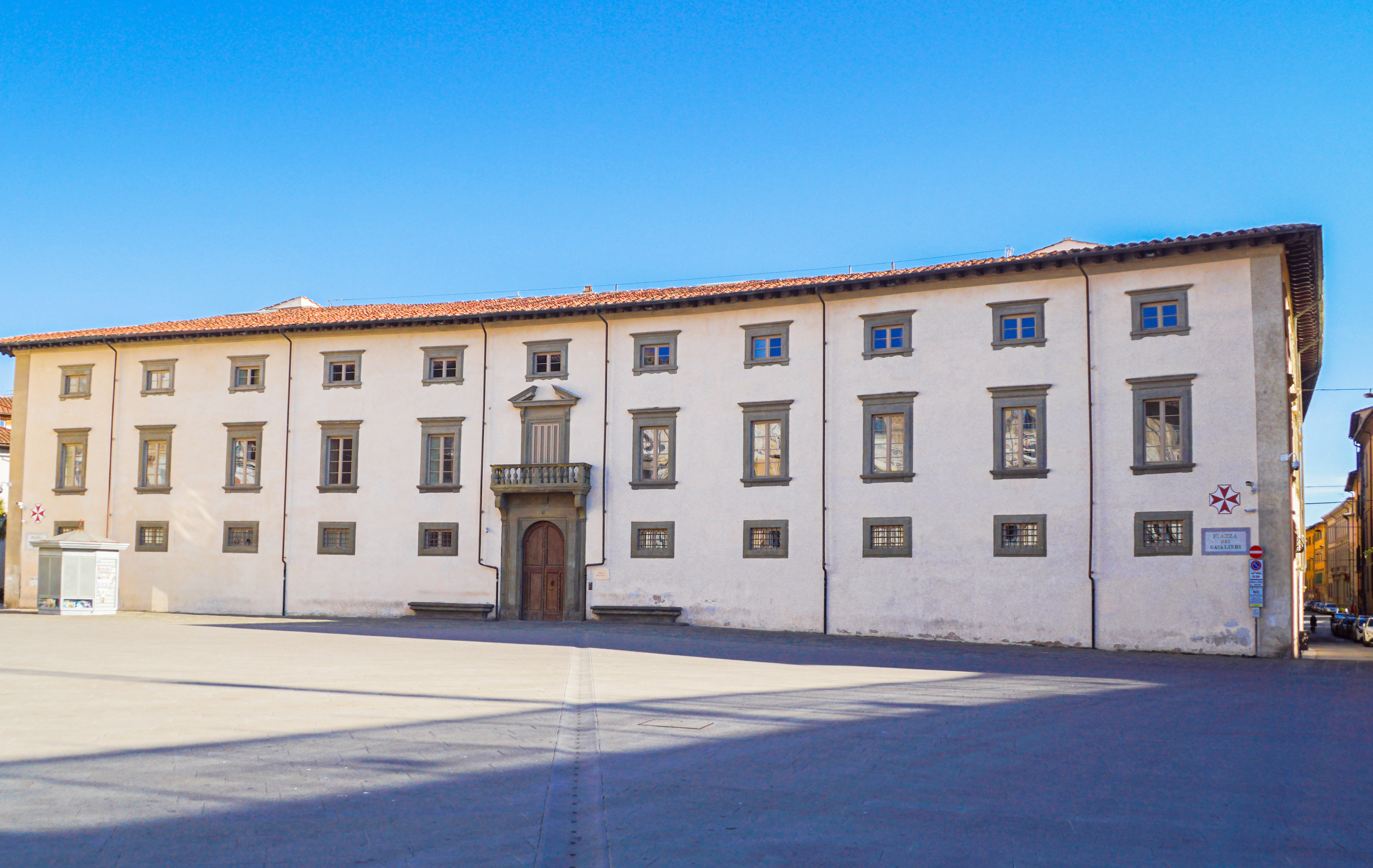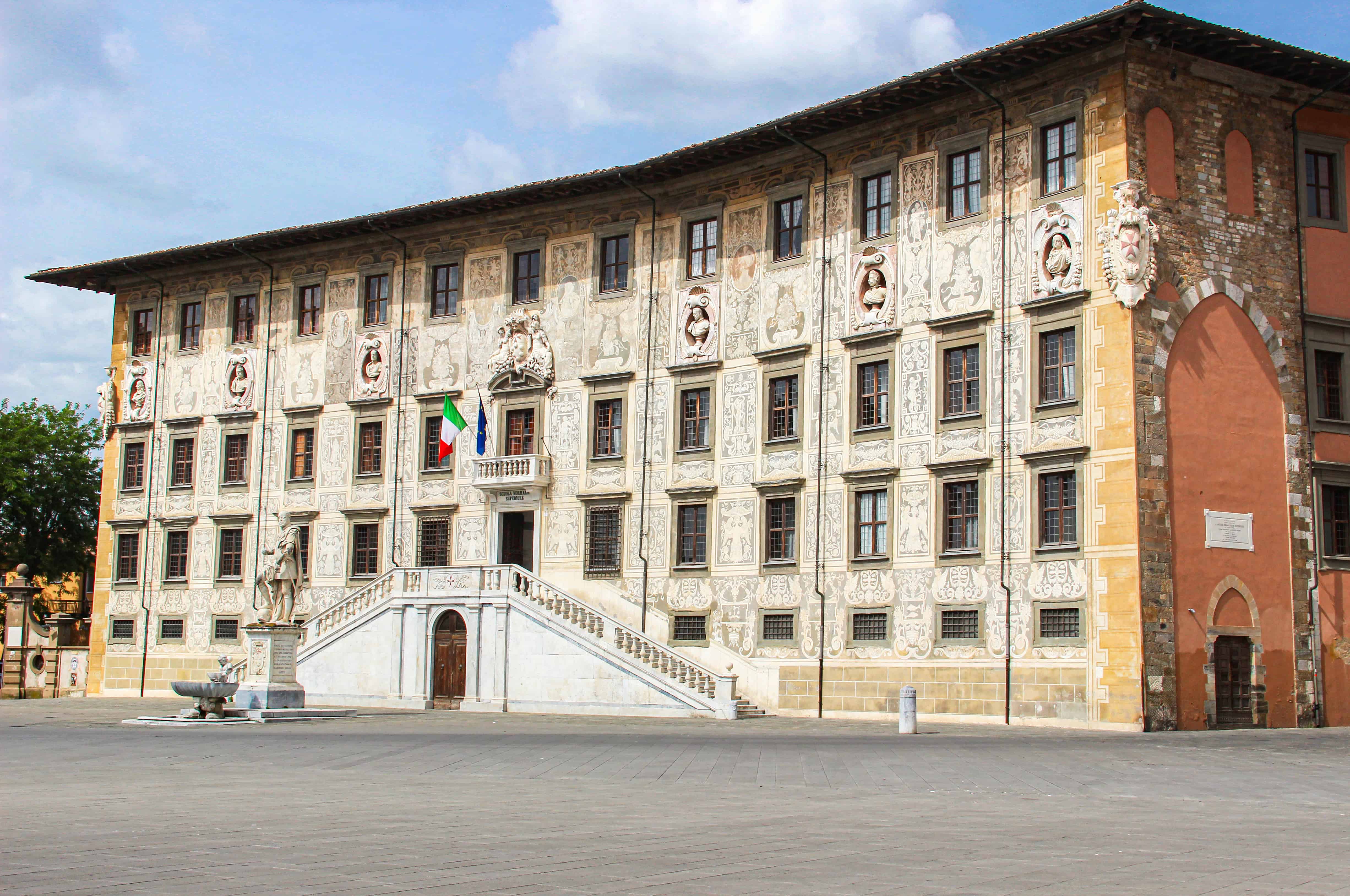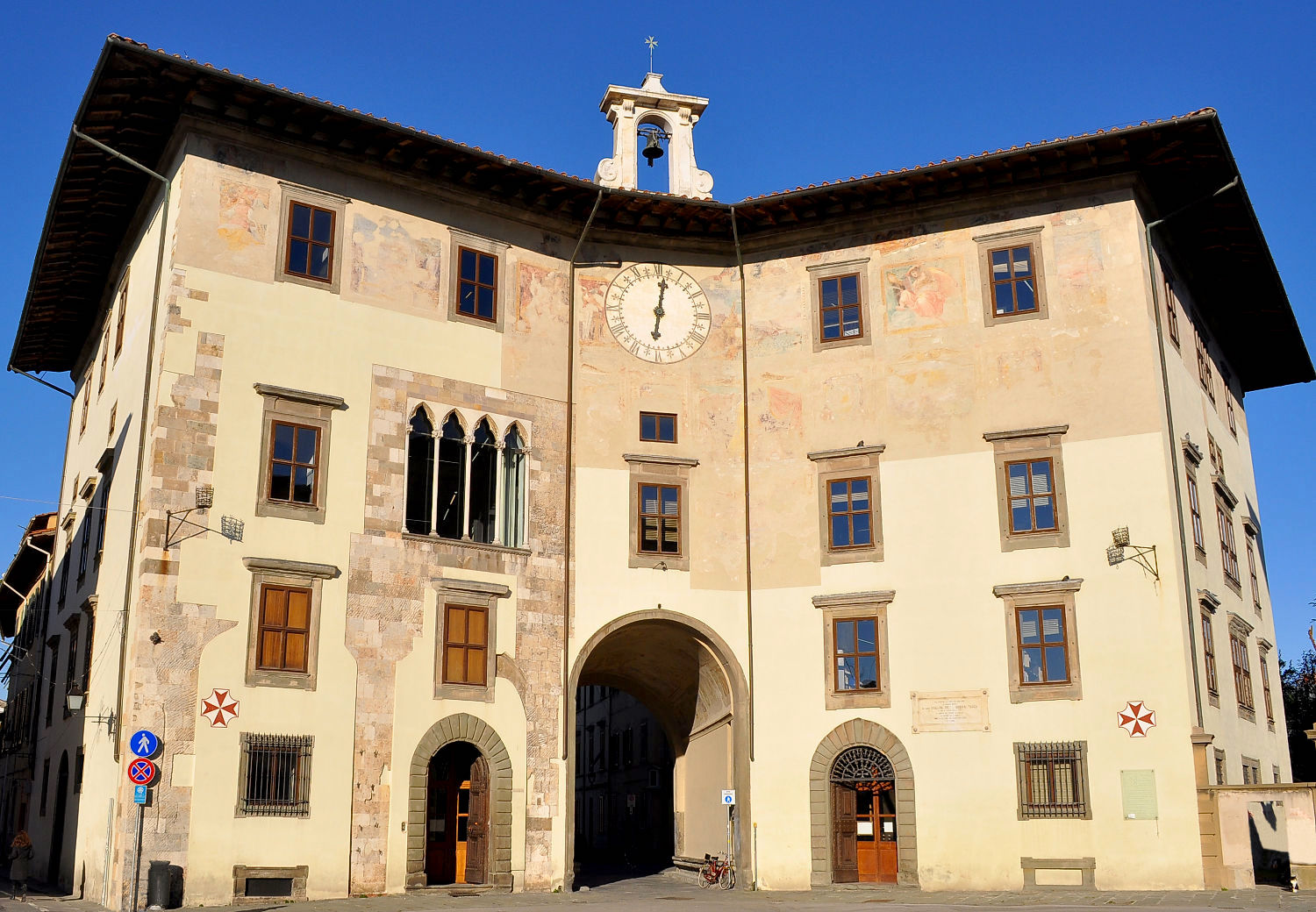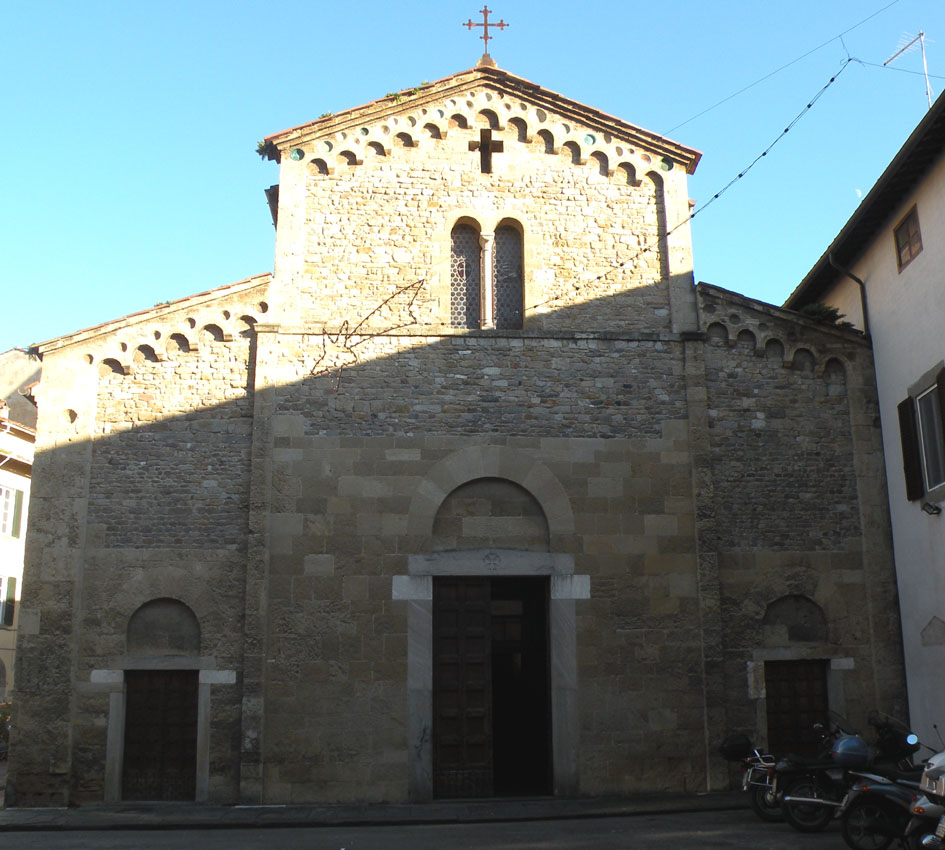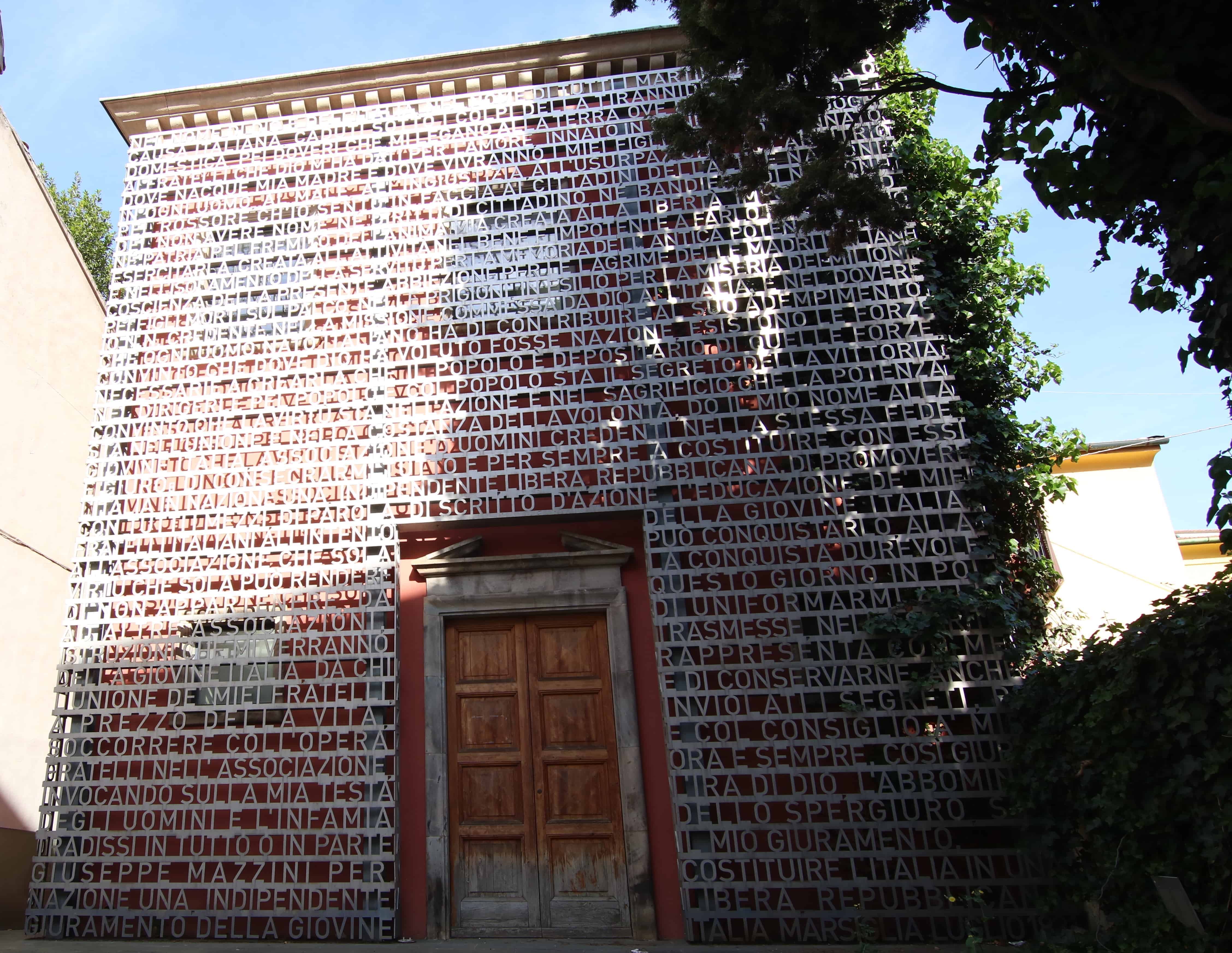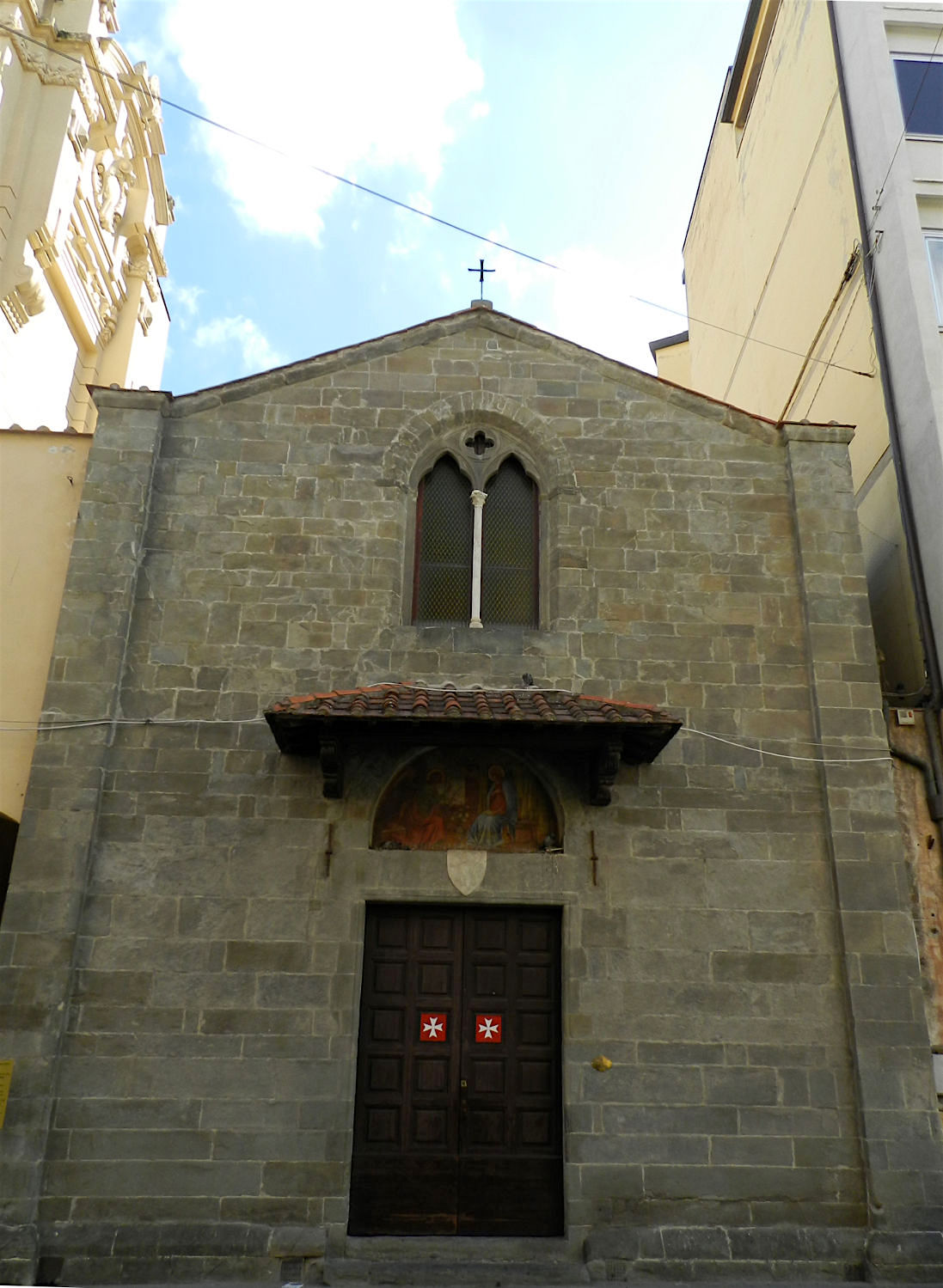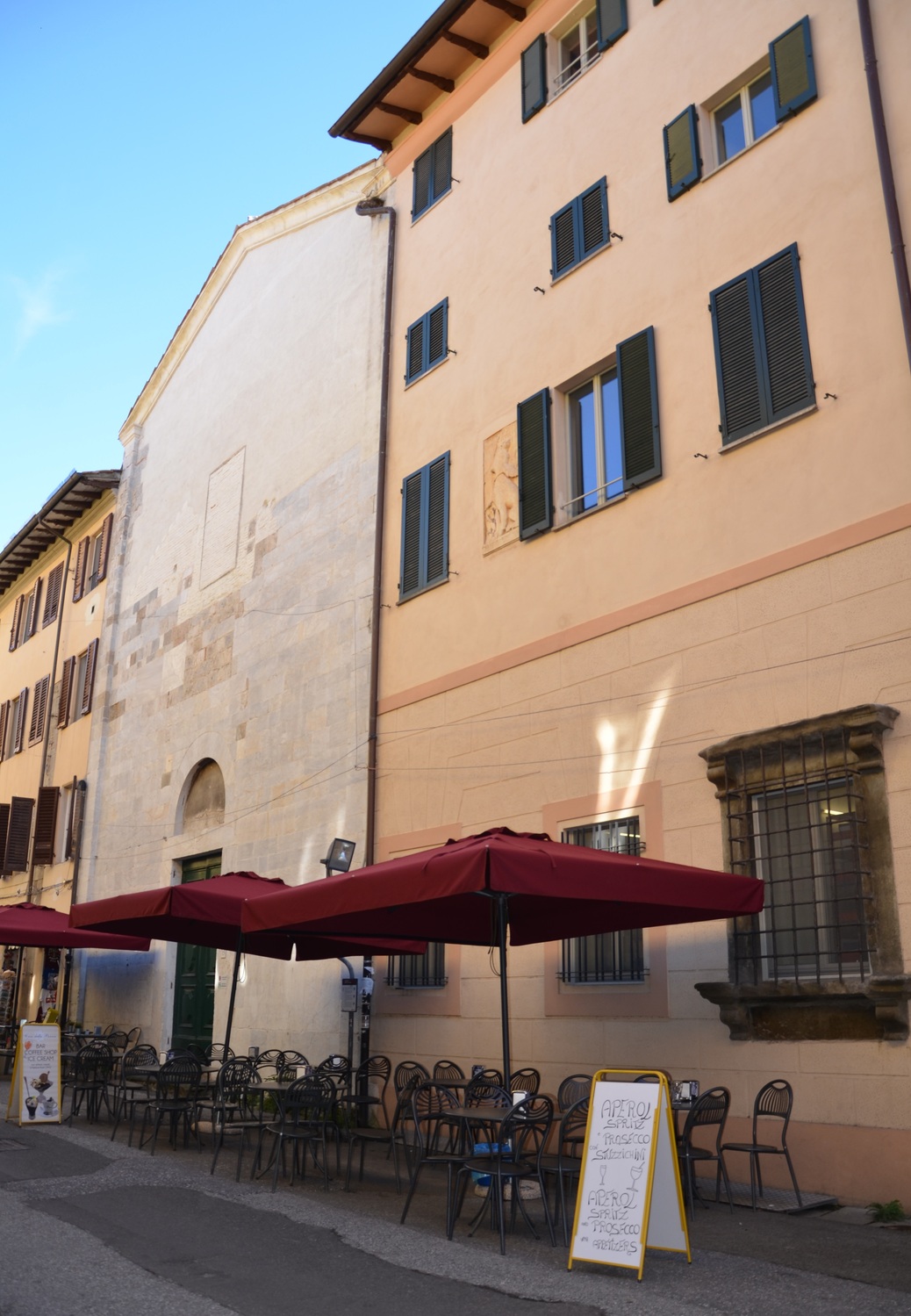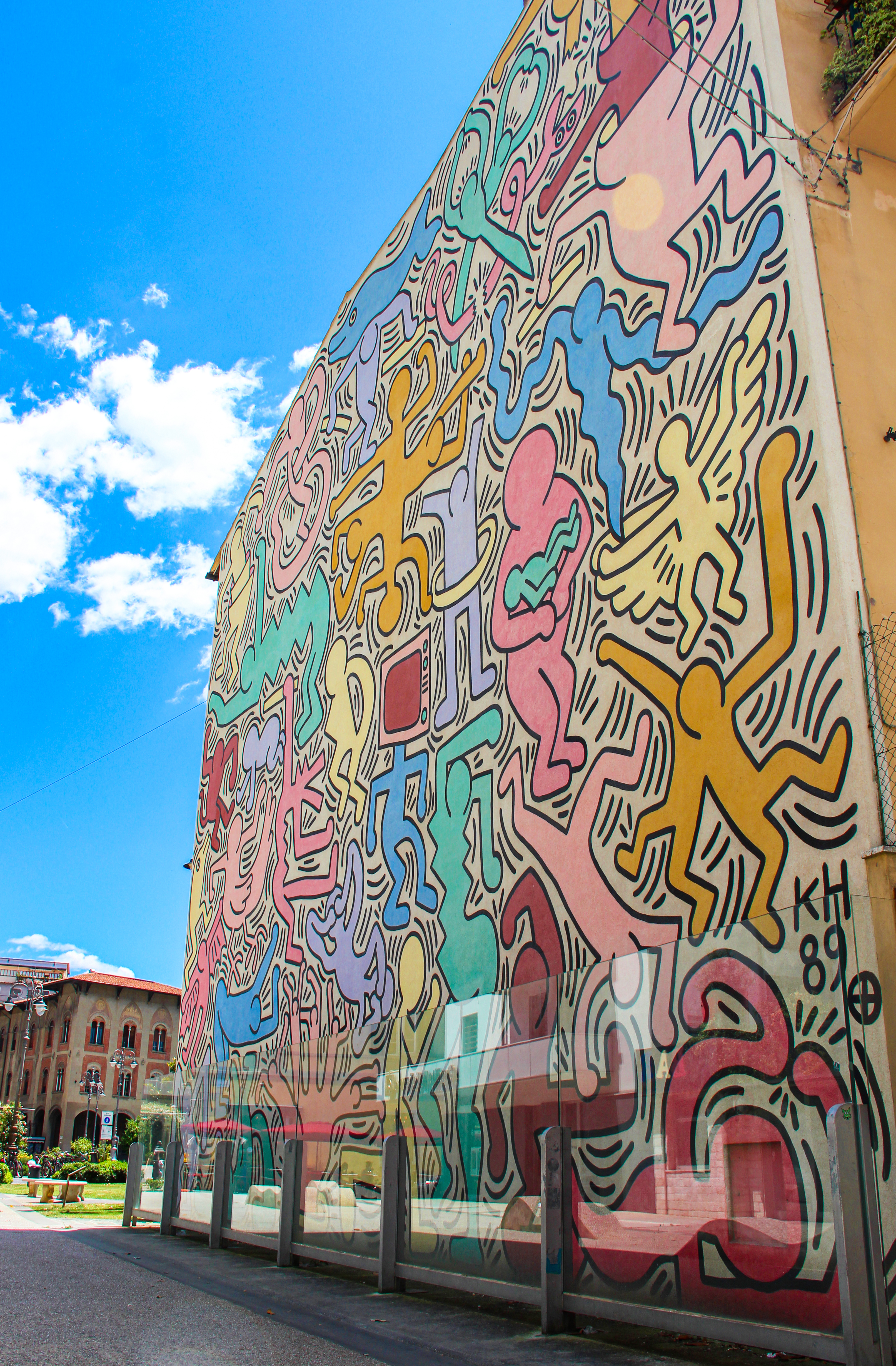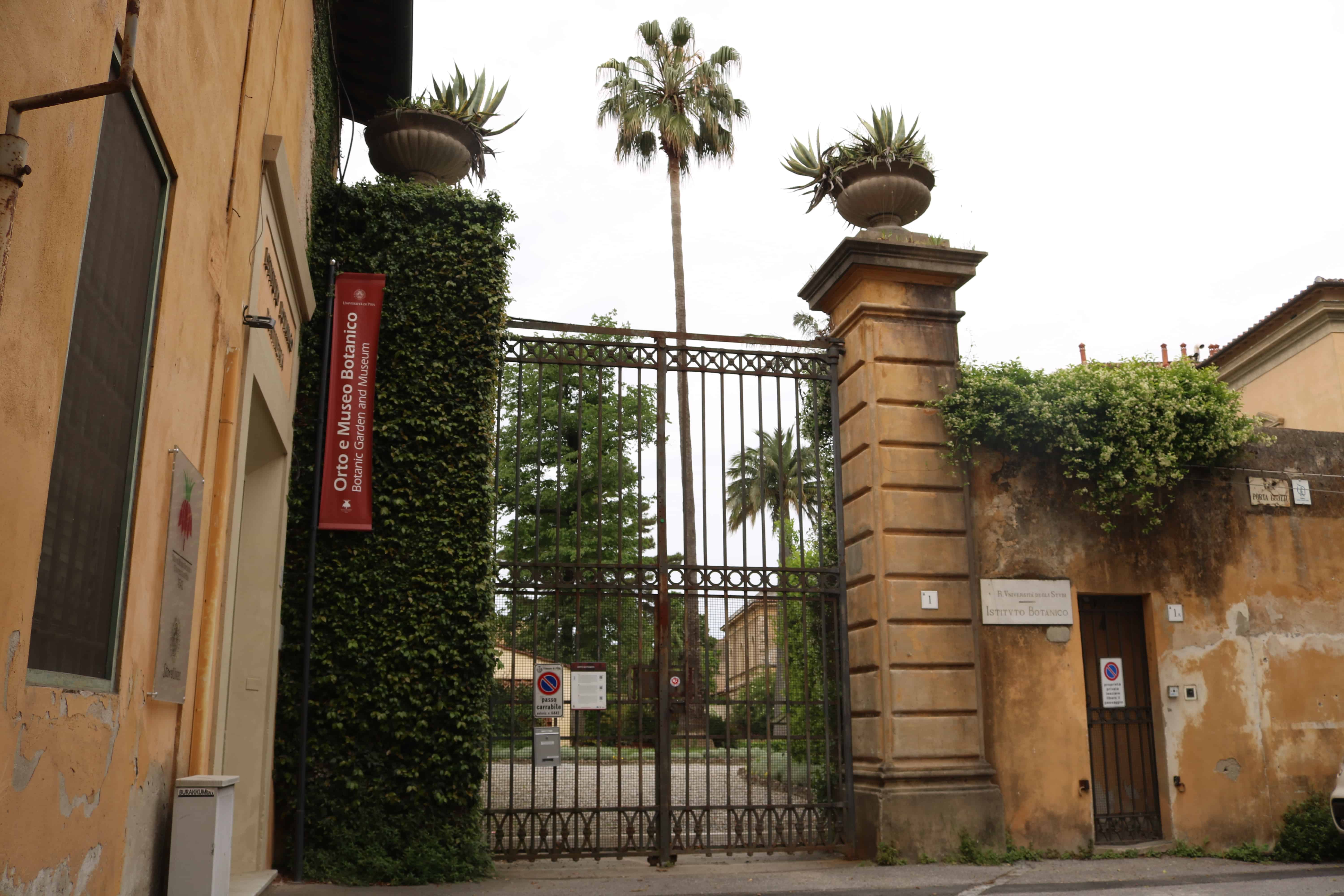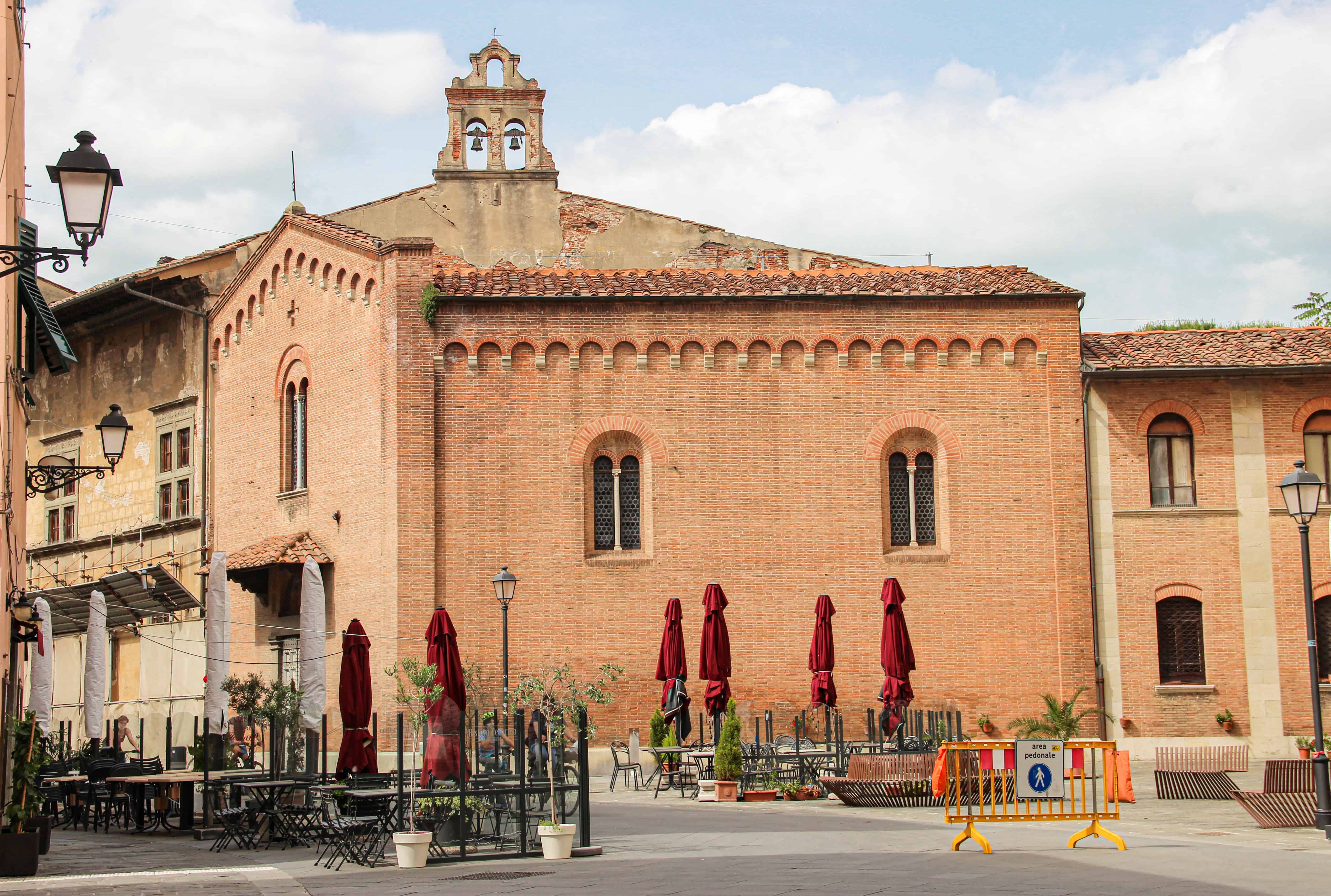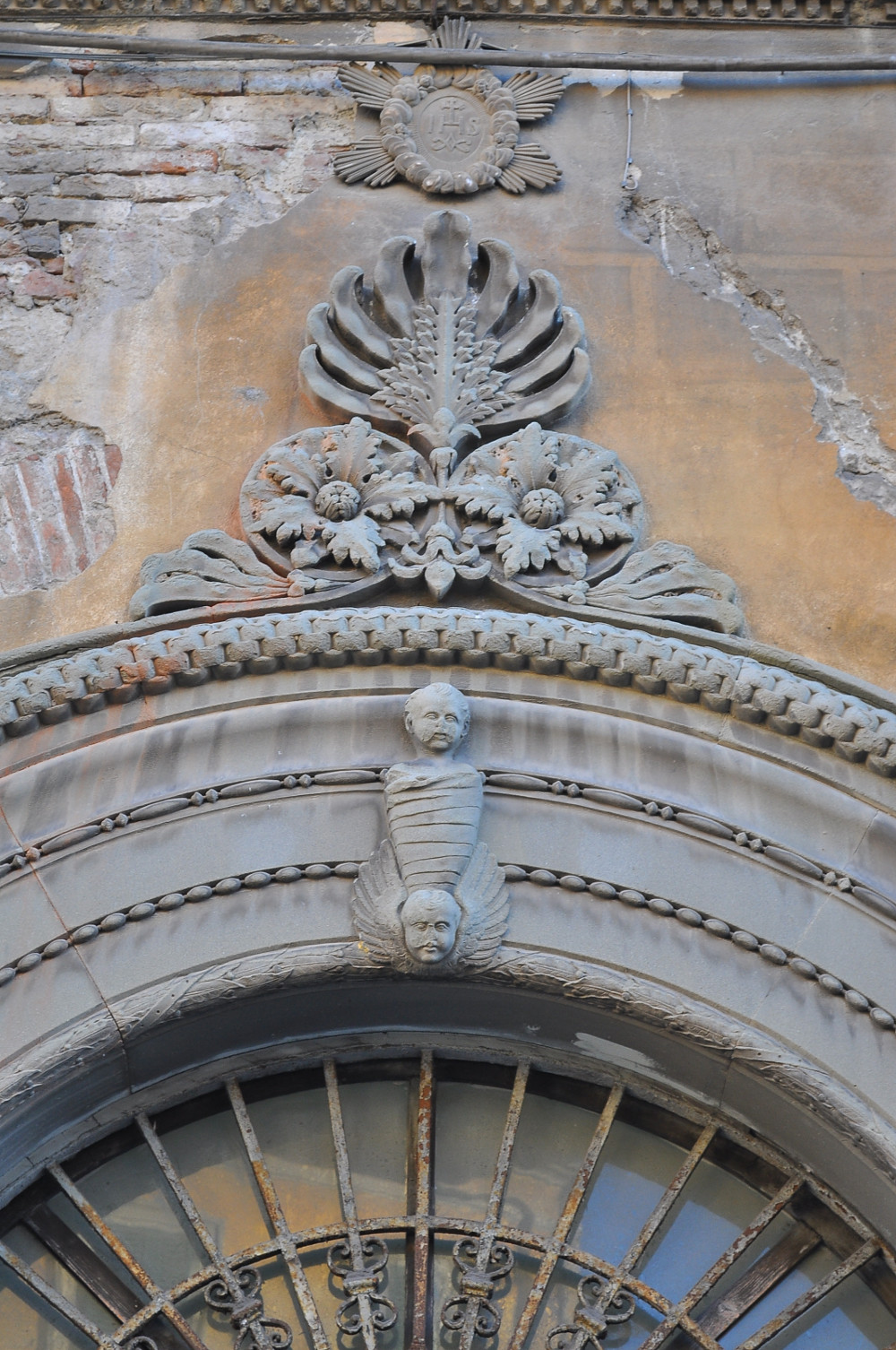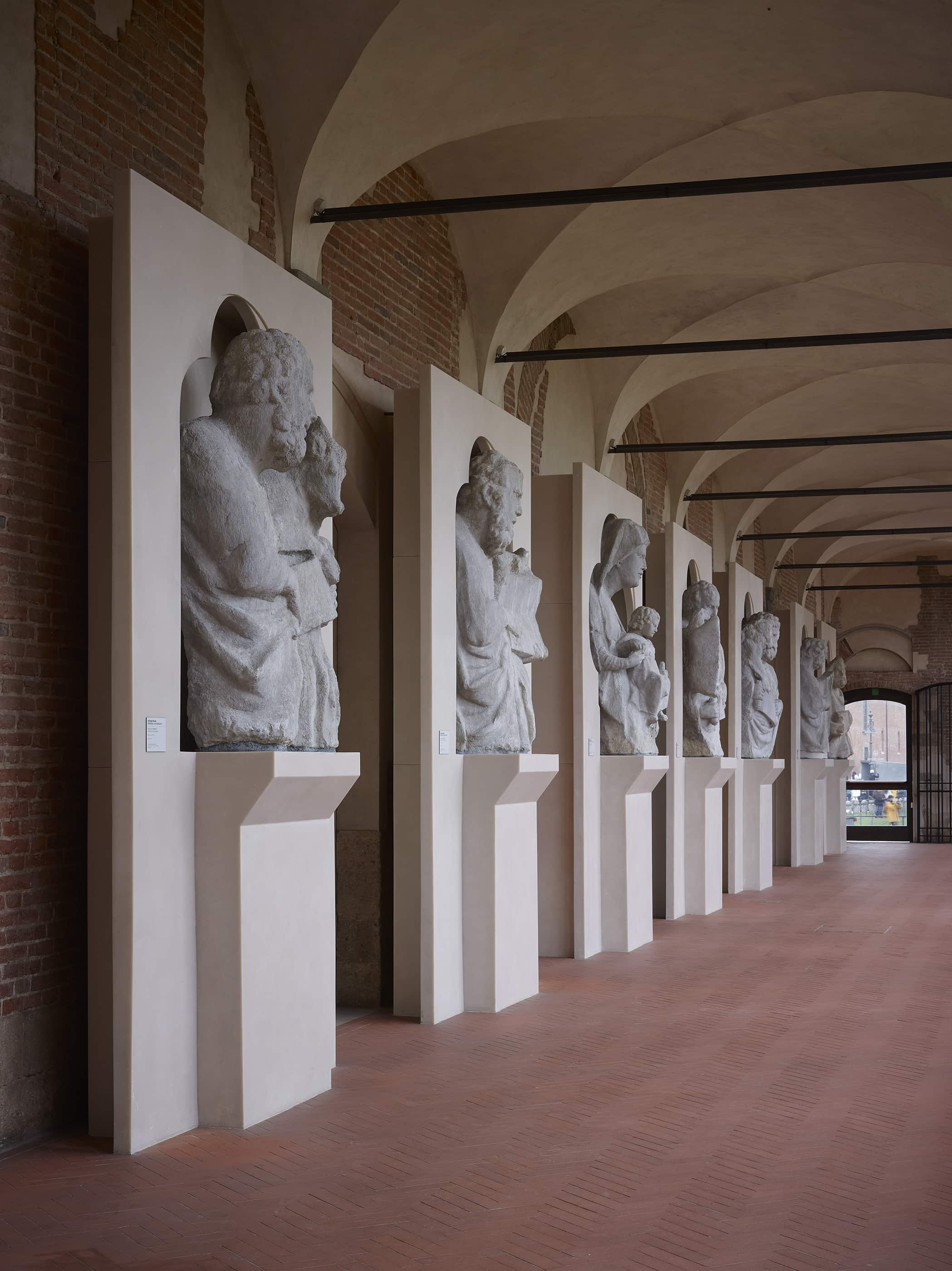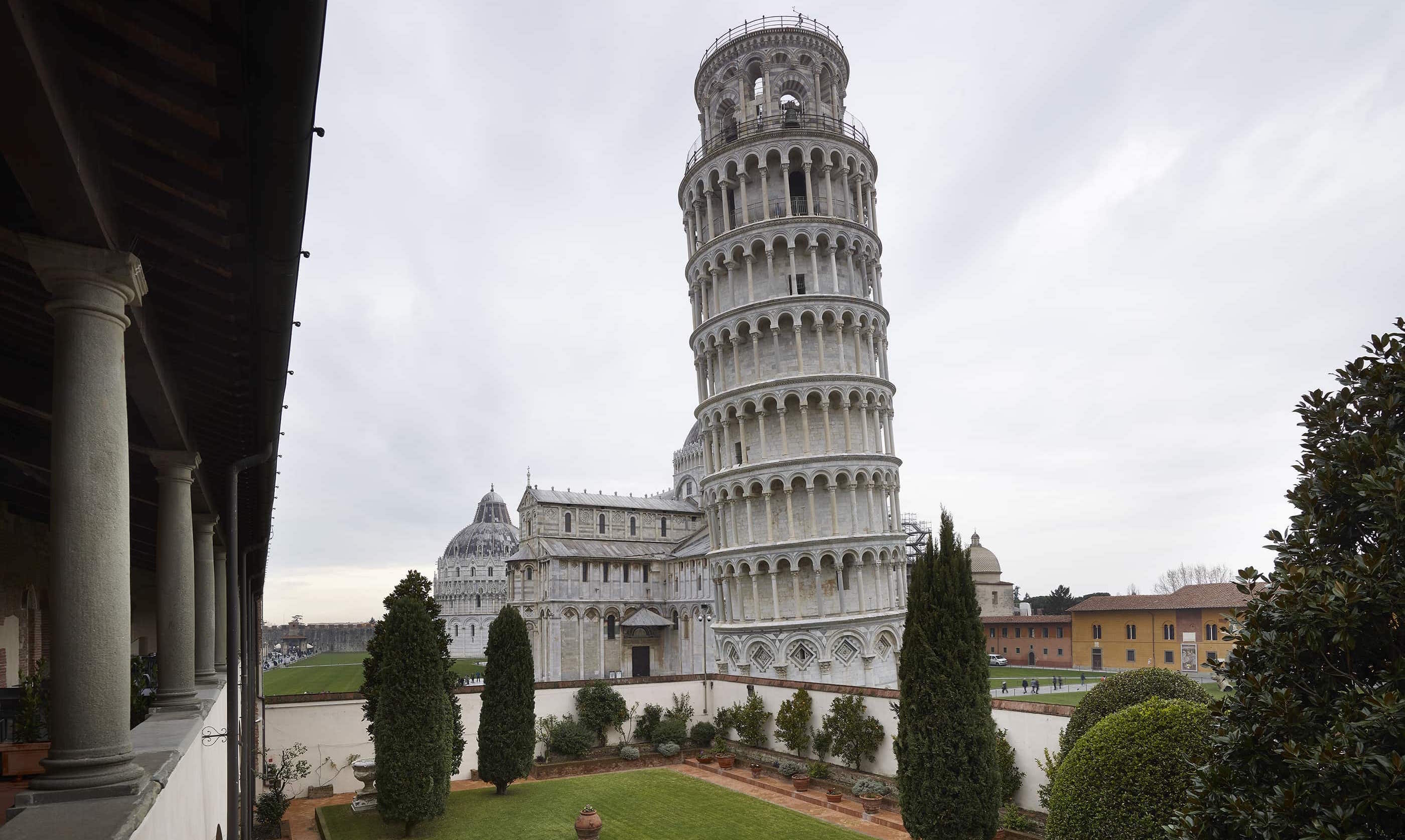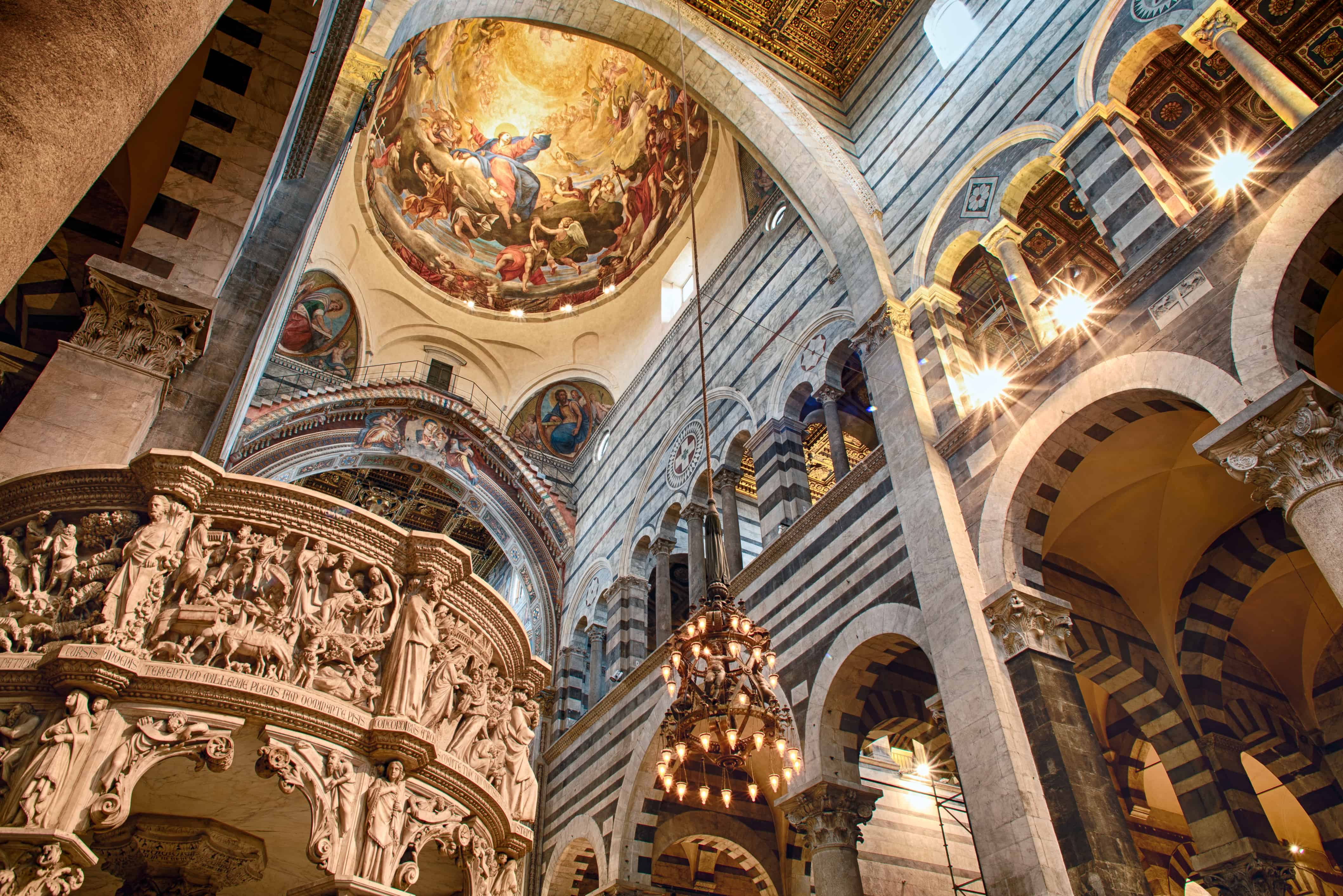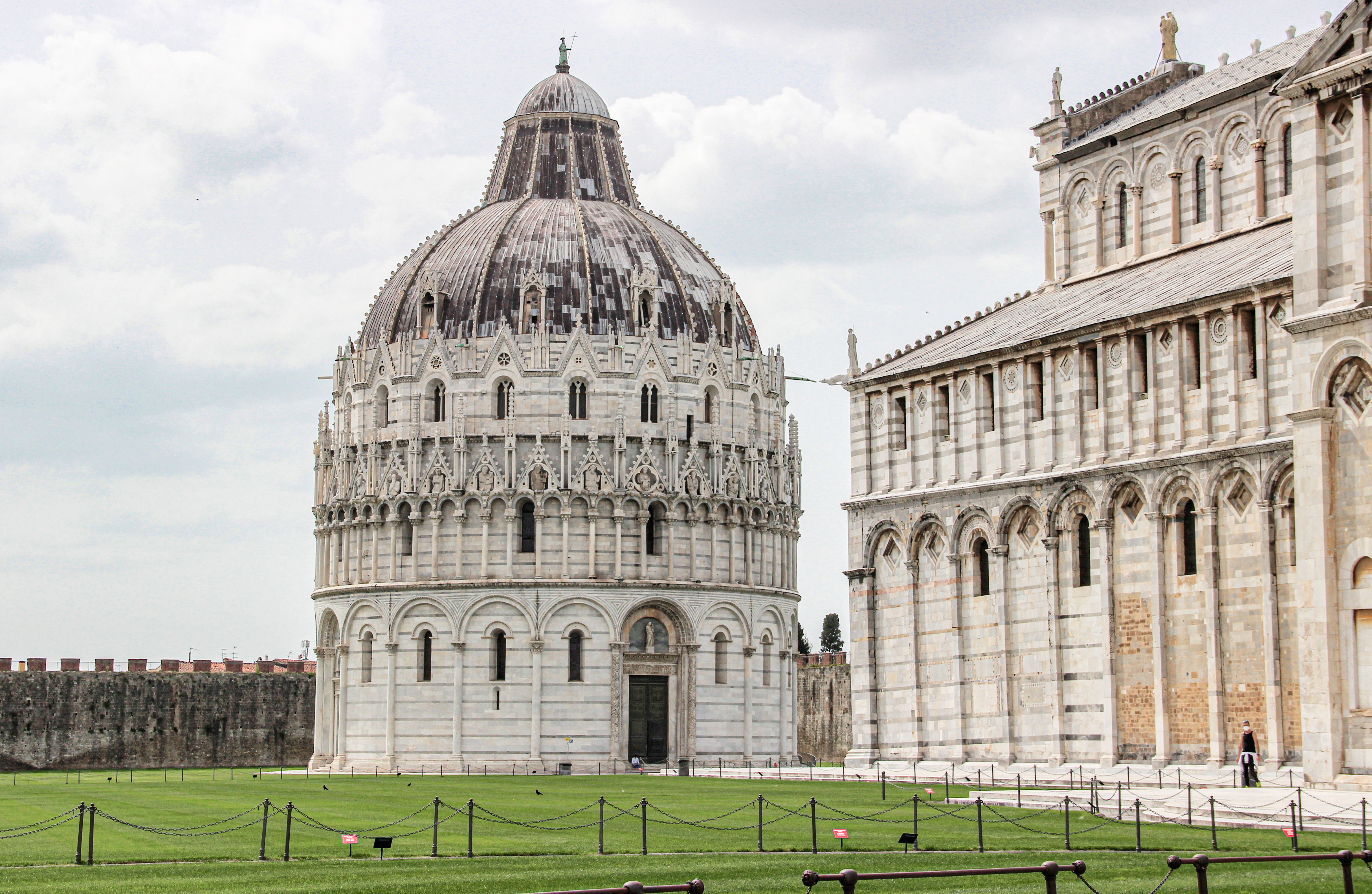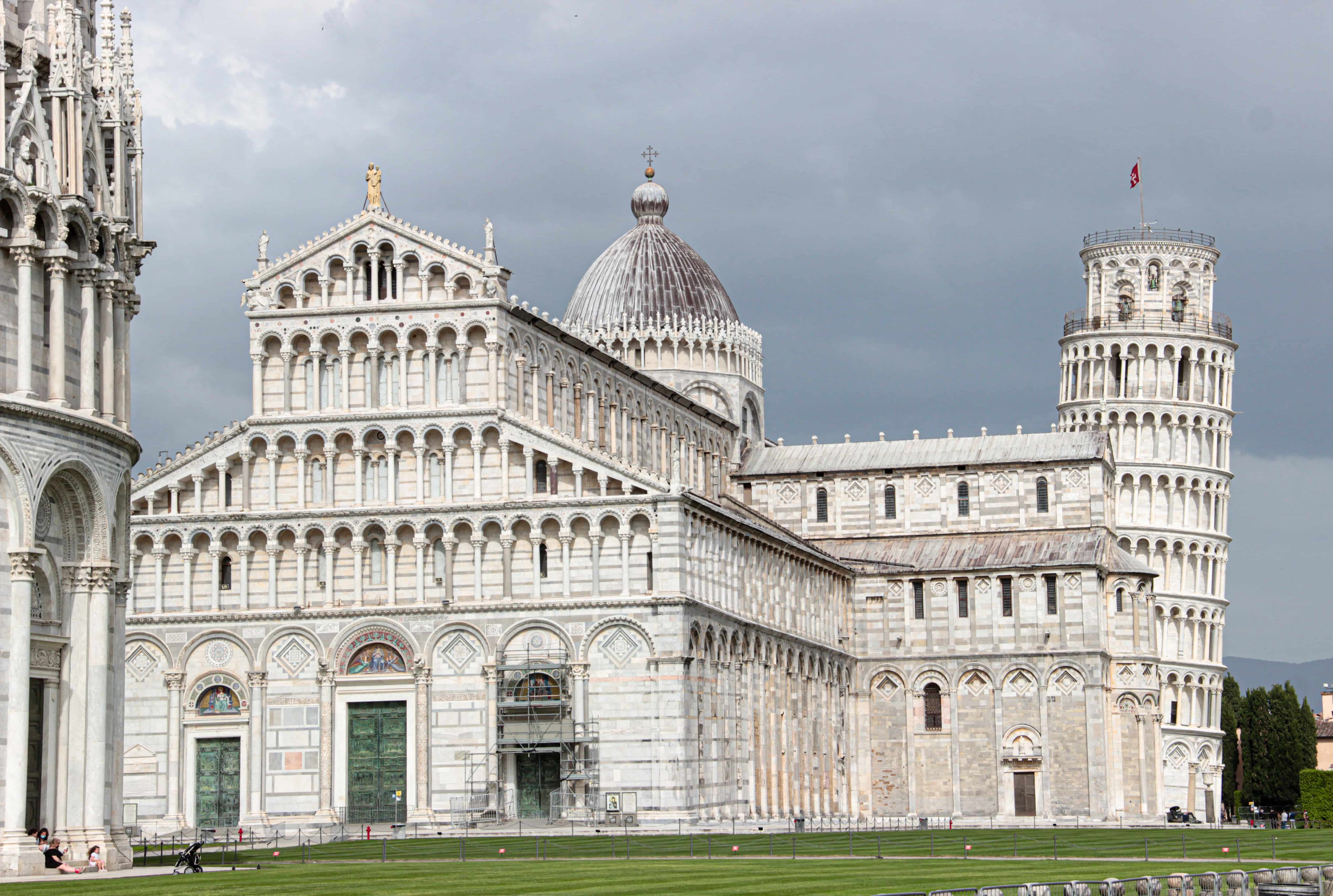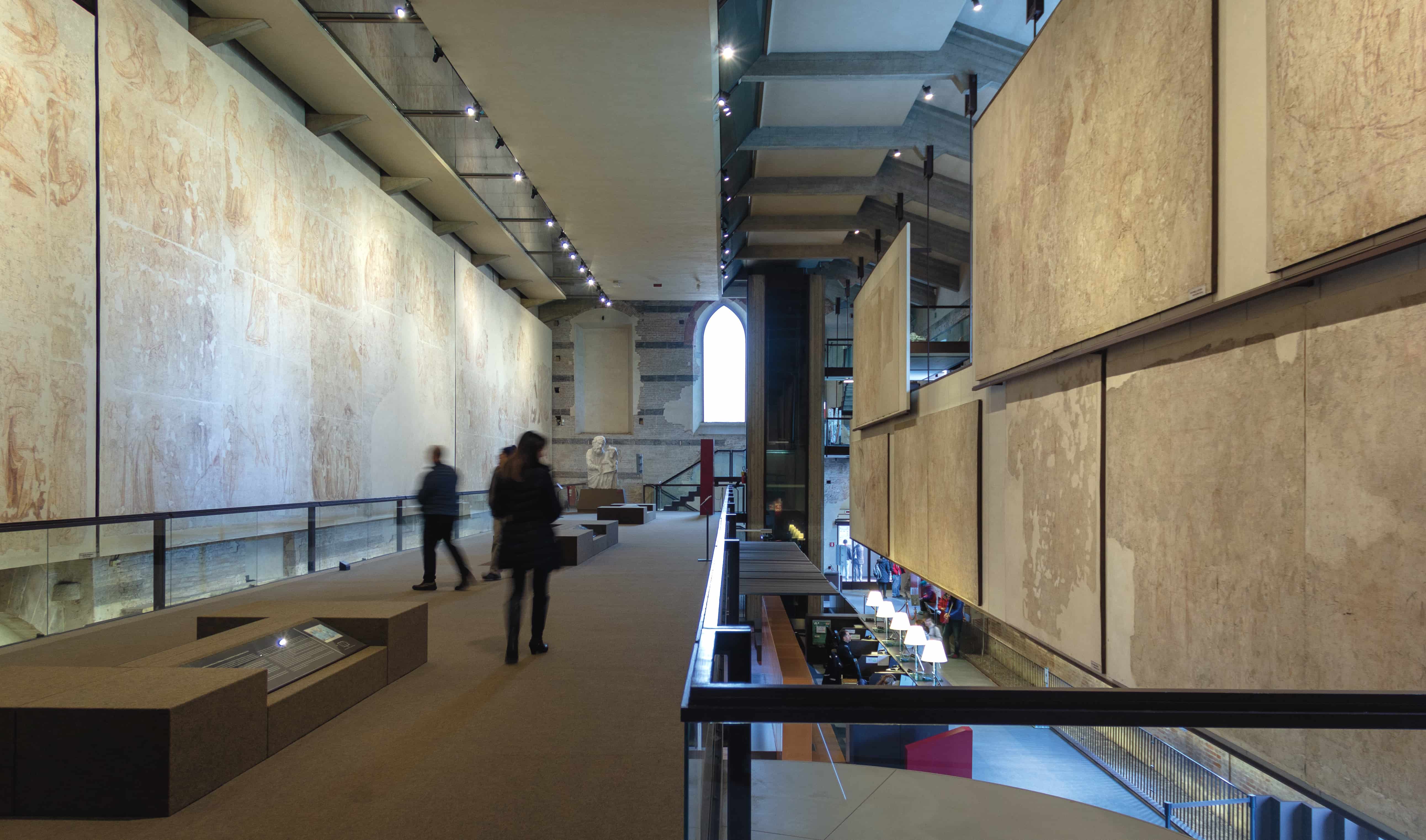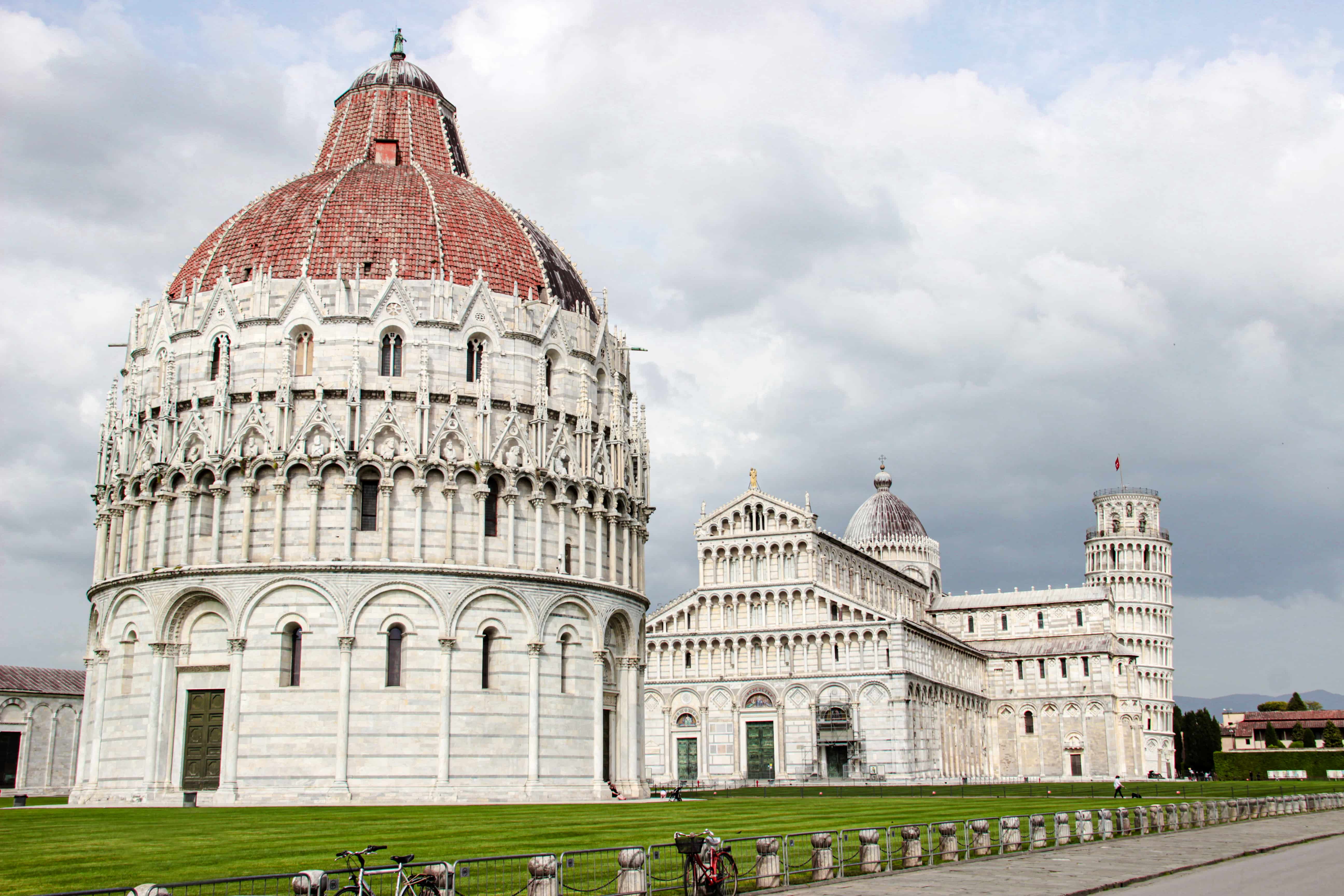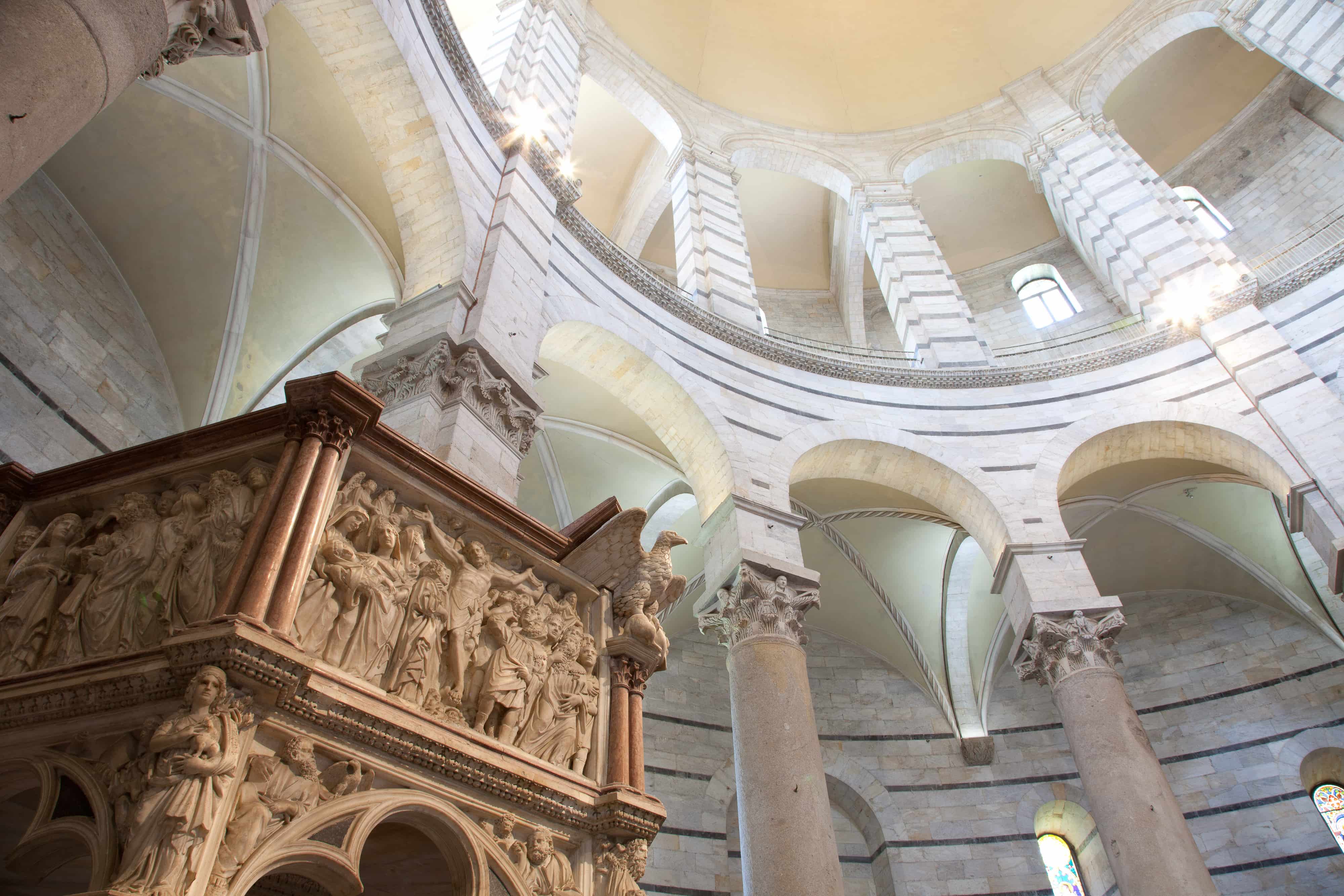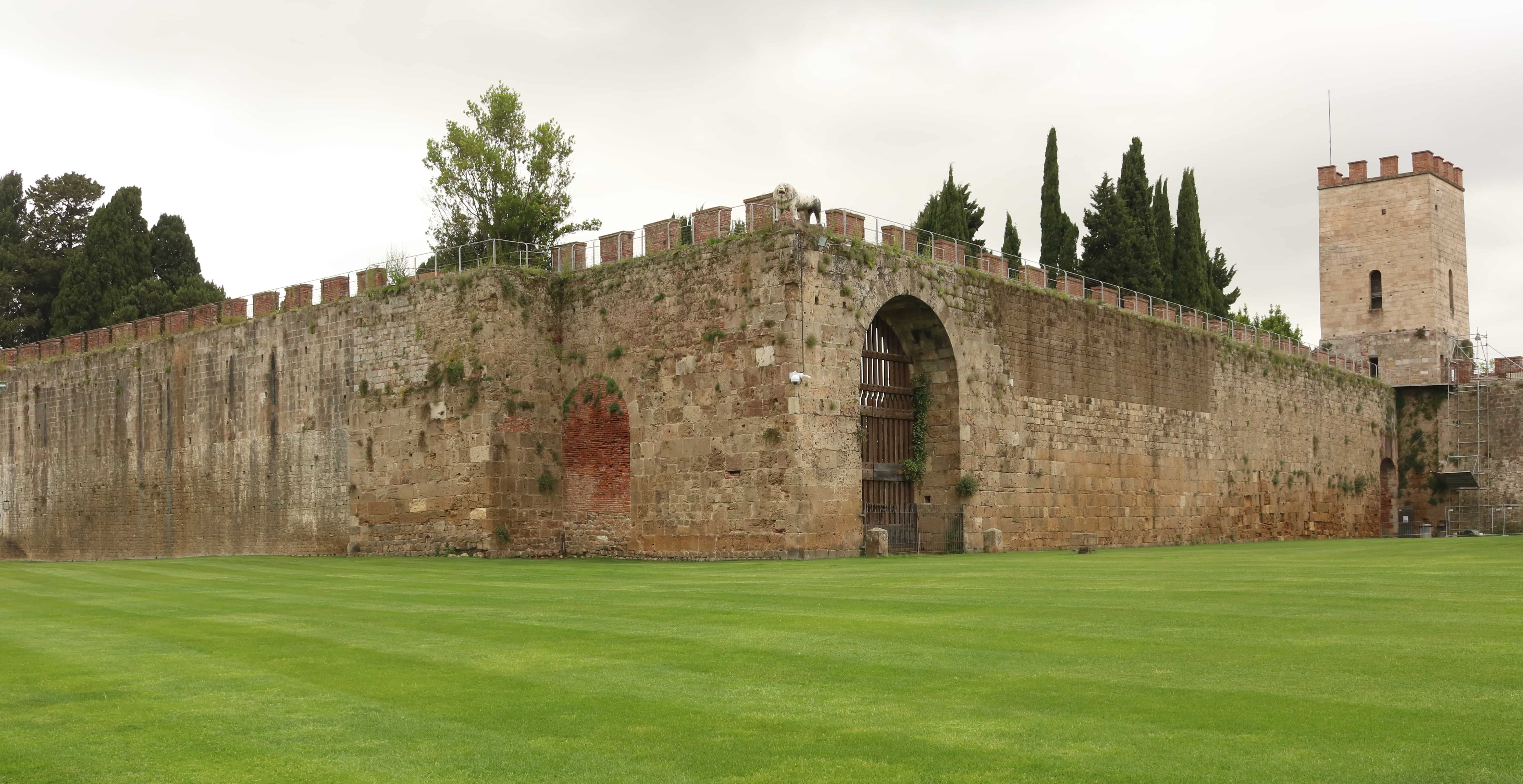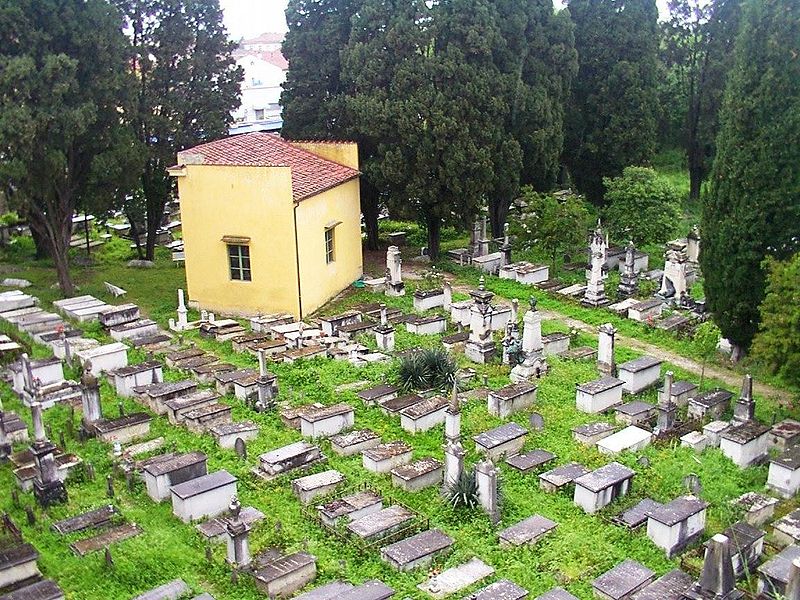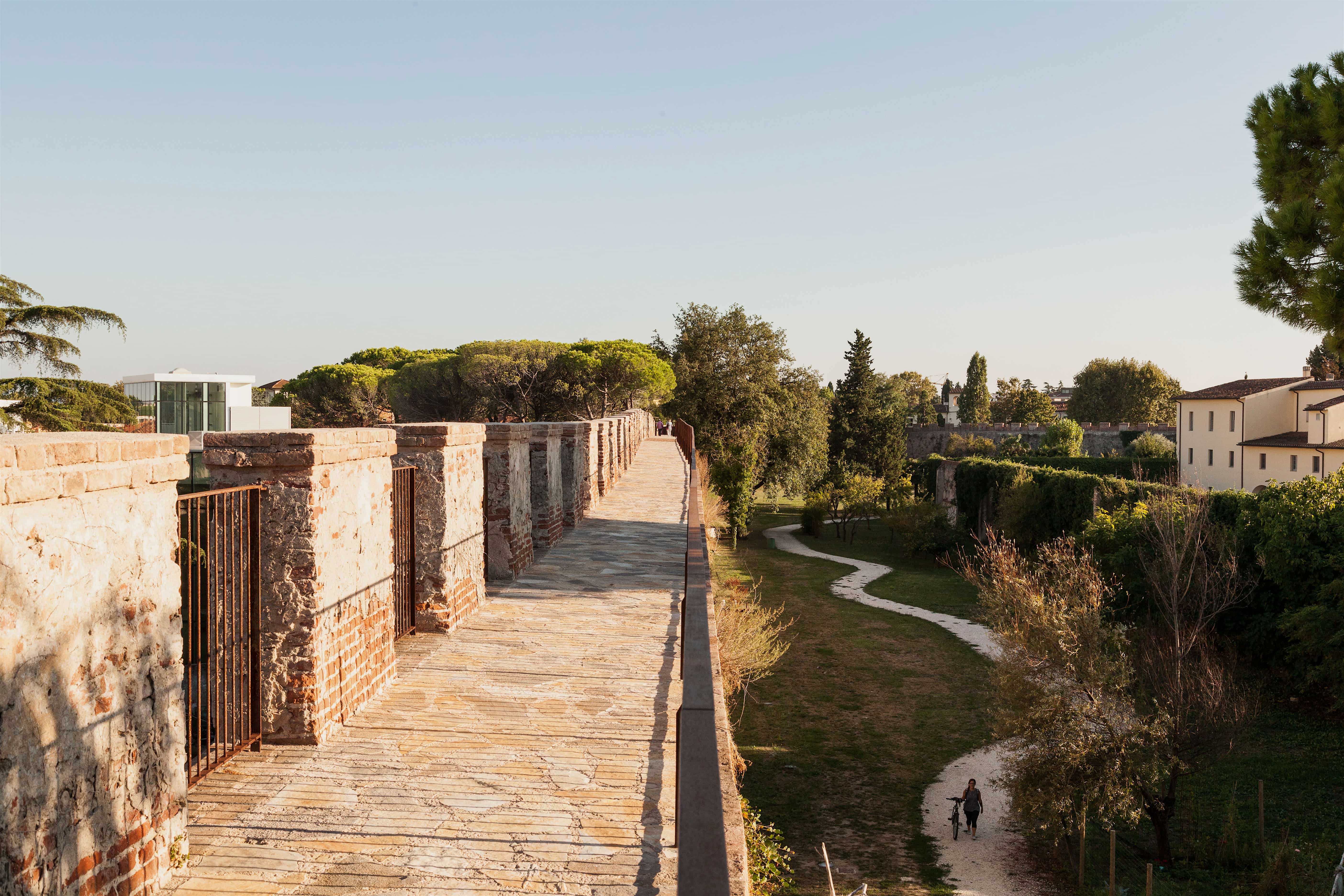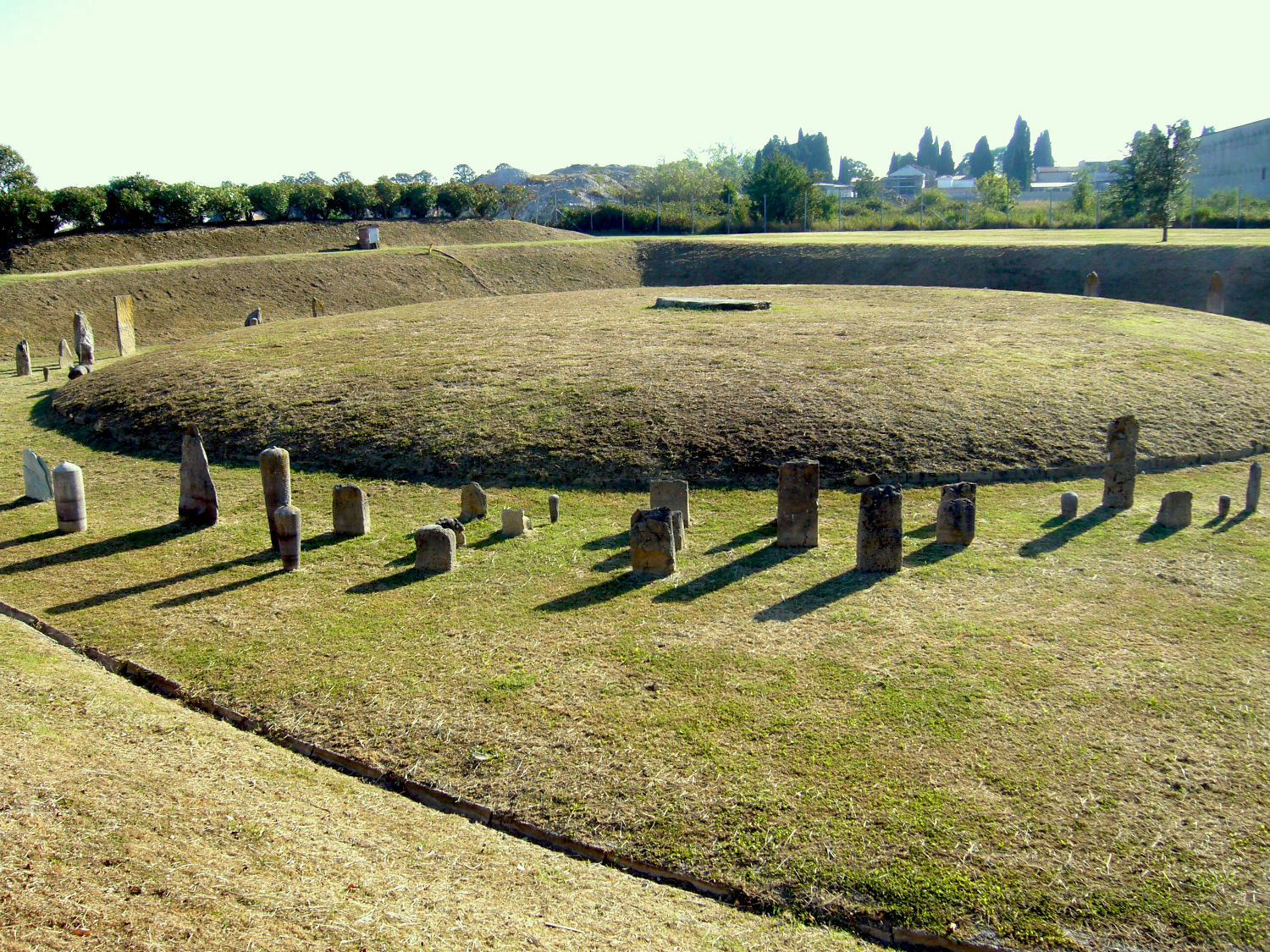Palazzo Gambacorti
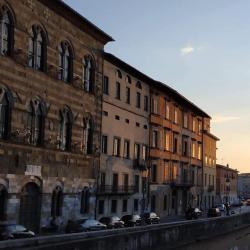
This building, now the Town Hall, is the result of a long history of adaptations and additions that, archaeological investigations have shown, began in mid 11th century, when a casa torre (tower house) now incorporated into the south side of Palazzo Gambacorti, was built between Via Toselli (Carraia Maiore in the Middle Ages) and Via degli Uffizi.
Although not easy to observe because of another construction built onto the east of it, the building technique used to construct the tower was extremely skillful, denoting a distinguished client, perhaps the Sismondis or Viscontis, known to have possessed much property in the area.
The Merchants’ “loggia” was built to the west of this building between the end of the 13th and the early 14th centuries, let to Catalans and Florentines in the 1400s. Because of alterations made between the 17th century and the present day, only the three arches on the ground floor of the original construction can still be seen, in via Toselli; these correspond to the inside of three aisles with cross-vaulting.
In the 1380s, the Gambacorti family built a palaxio novo, corresponding to the buildingfacing the river Arno, joinedto the already mentioned structures. The result is a prestigious building of great technical and architectural interest, unique in Pisa, built to a square plan, of generous proportions in height and extension. The north prospect has three rows of windows and is decorated in a two-tone effect obtained by the use of several different materials, some of which of high quality and never before used in Pisa. In a 15th century engraving, the topmost part of the palazzo, no longer existing, is decorated with small windows and blind arches.

